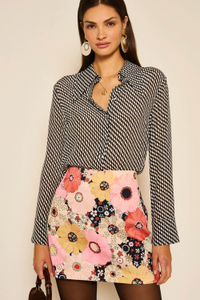From micro mini skirts to flower power, we revisit our favourite '60s fashion trends
These game-changing looks remain influential to this day...
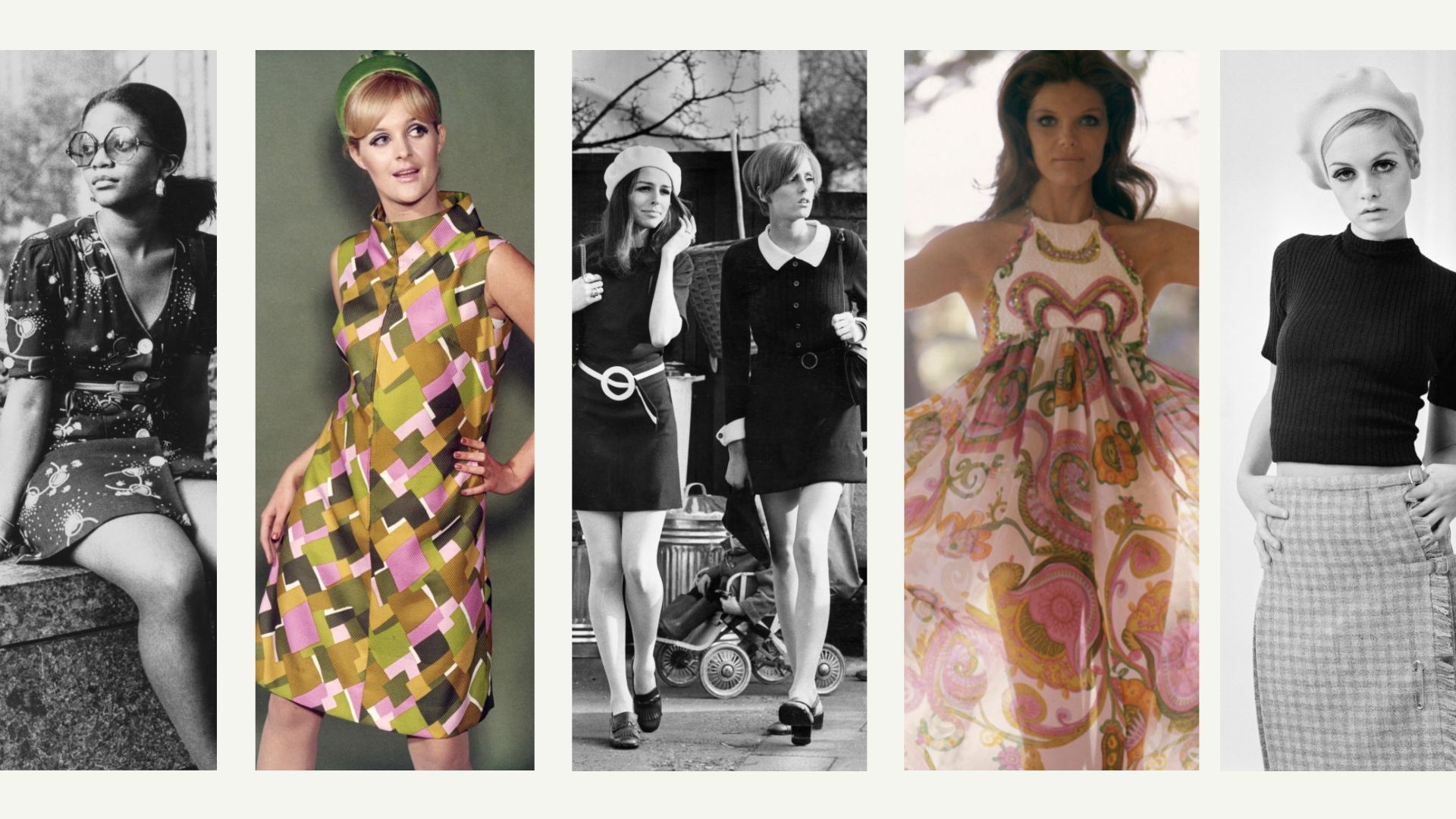
The 1960s were marked by significant social, political and cultural upheaval, from the rise of the civil rights movement to the women’s liberation movement and the space race. Sartorially speaking, it was also one of the most important eras of the last century.
The youth-driven cultural revolution led by young people eager to buck tradition while enjoying increased economic power paved the way for a new market for youth fashion; one that played by its own rules.
From mini skirts to psychedelic prints, go-go boots, futuristic shift dresses, crocheted hippie styles, and so much more, we look back at some of the enduring styles of the tumultuous era that we still love to this day - with cameos from It girls like Mary Quant, Twiggy, Brigitte Bardot and Jane Birkin.
Unforgettable fashion trends from the '60s
Miniskirts, everywhere
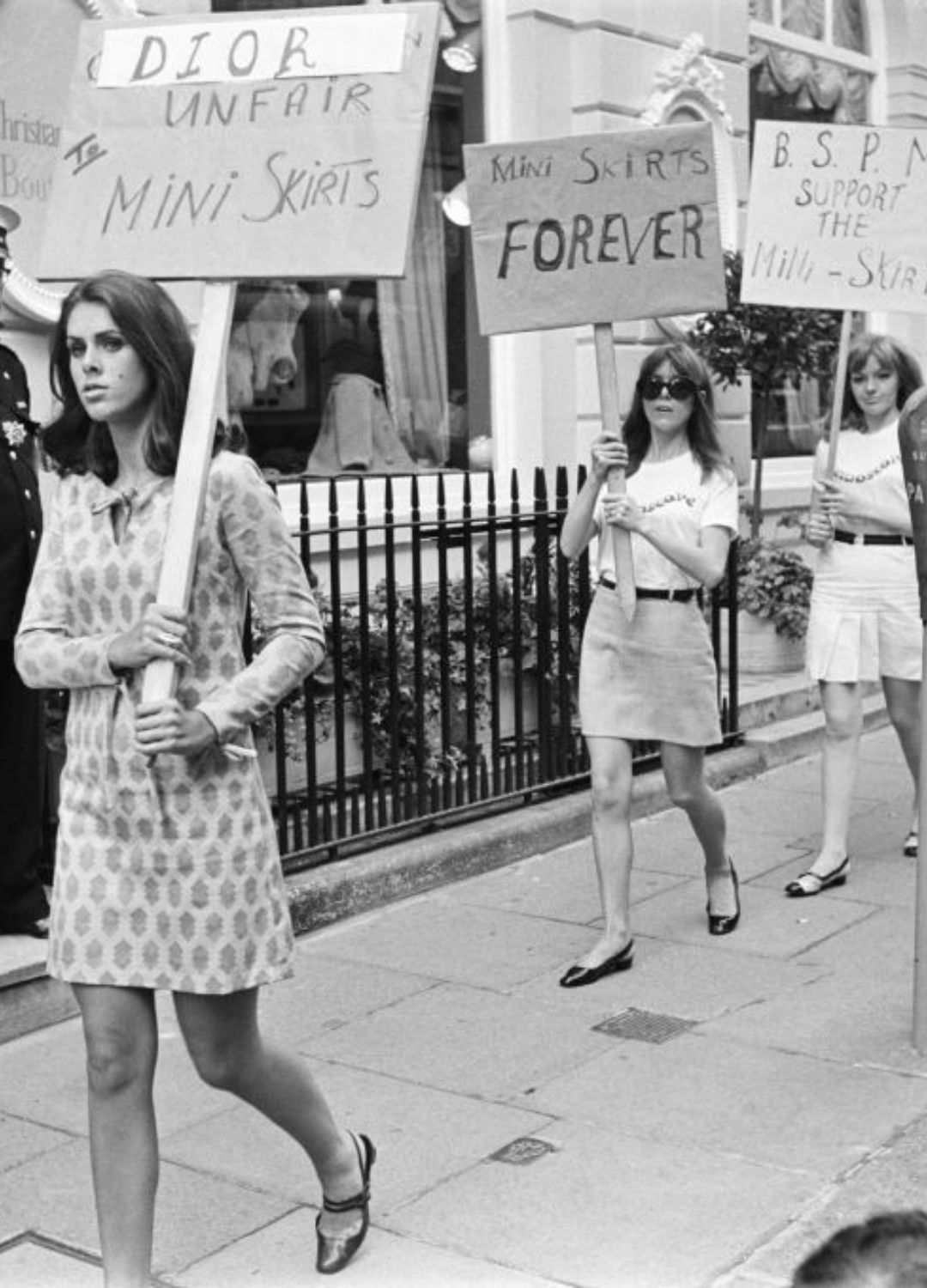
Arguably the most defining look of the entire era was the mini skirt, popularised by Mary Quant. Credited with inventing the mini skirt as we know it today (though shorter hemlines also featured in the 1964 collections of designer André Courrèges), Quant famously named the ubiquitous style after her favourite car, the Mini Cooper.
Minna Mini Skirt | £185 at Boden
We love this '60s-inspired mini skirt from Boden. Made from thick cloqué with a textured finish, it's glam and perhaps a little more modest than the mini skirts of yesteryear. A great capsule wardrobe staple.
Go go boots
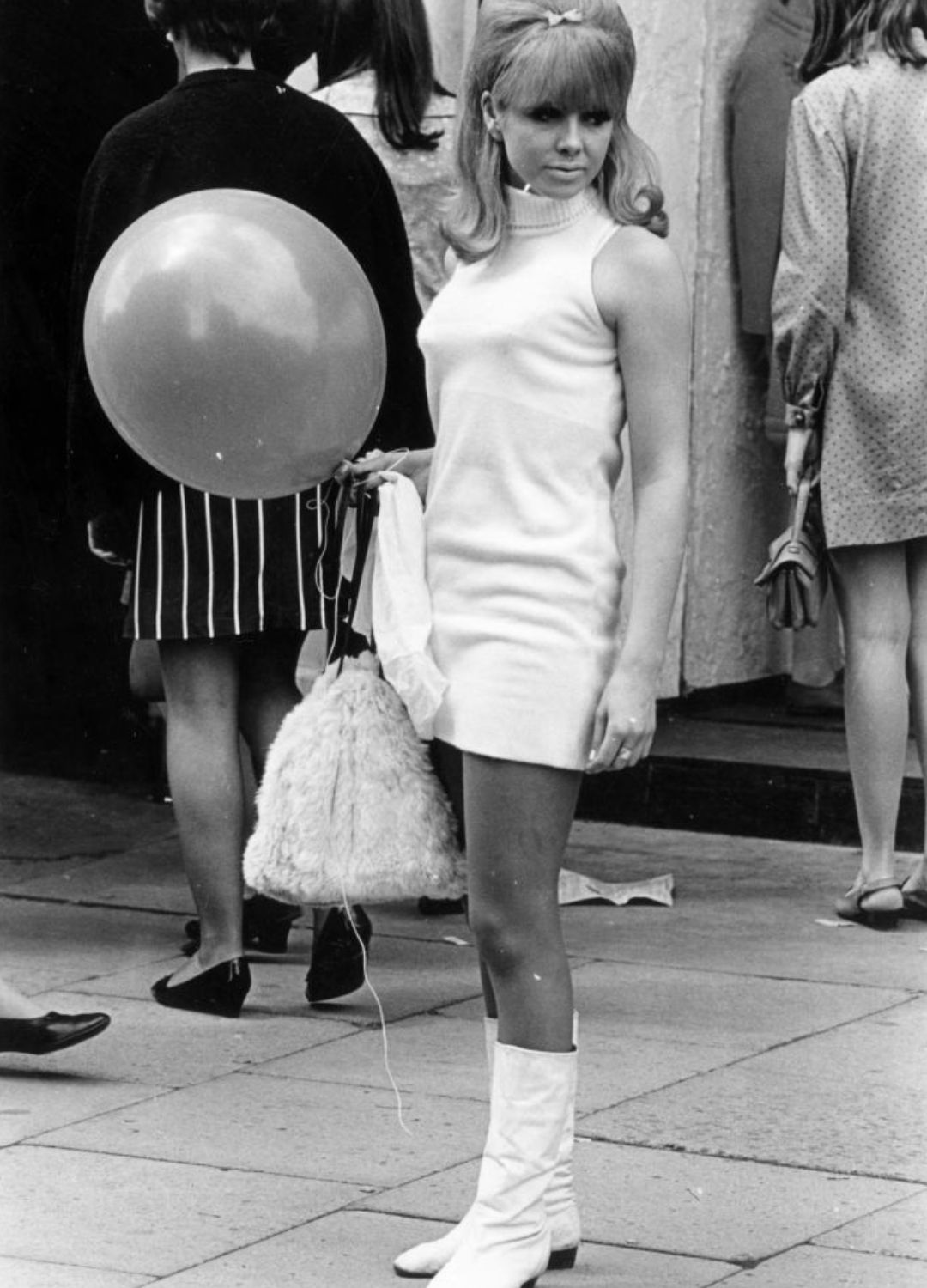
First created by designer André Courrèges in his futuristic 1964 collection, go go boots were bold, feminine and reflected a new era. While different iterations exist, the most iconic style generally featured a block heel, square toe, simple block colour (often white) and longer length.
Mod style
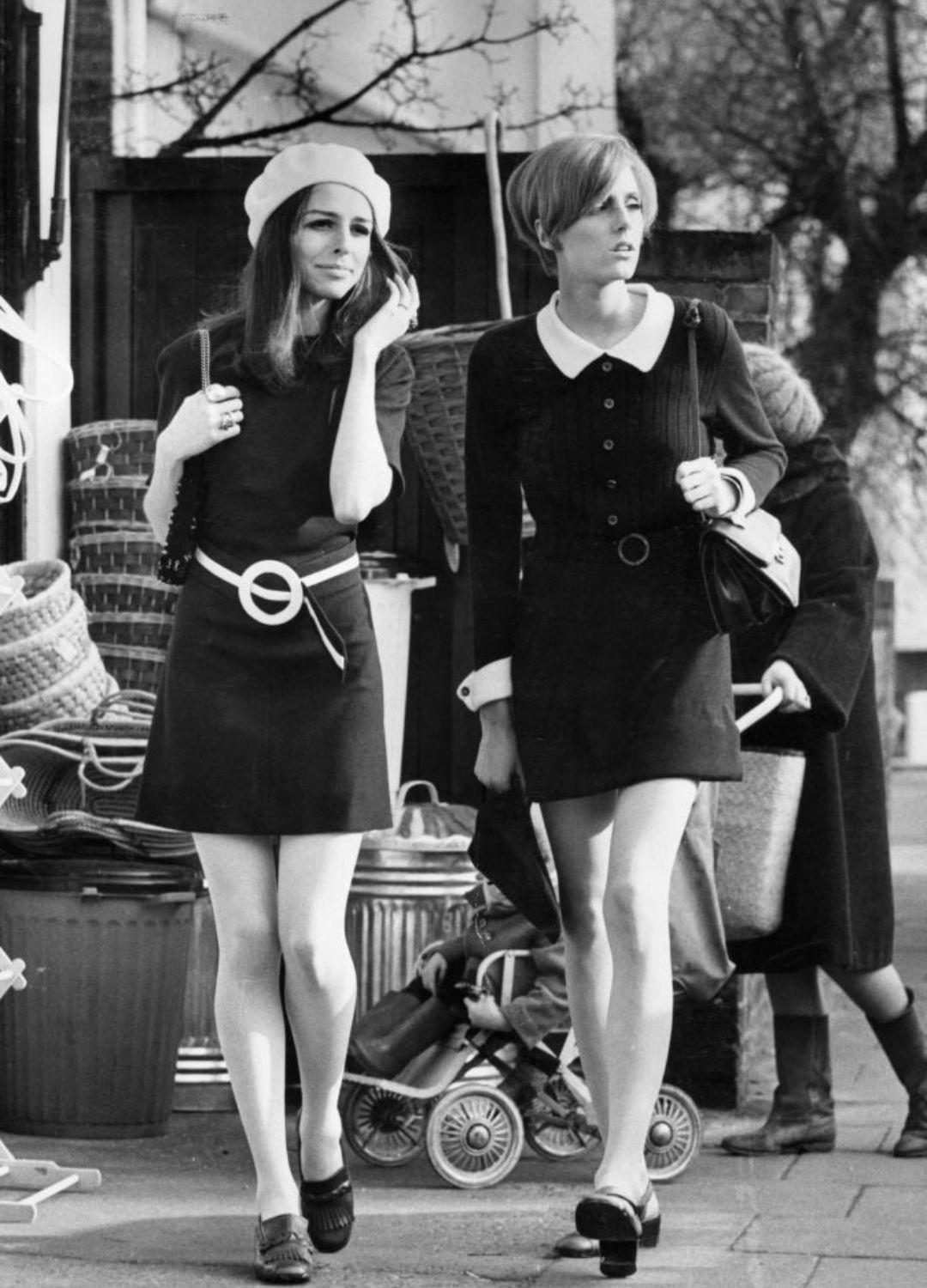
Characterised by clean lines, tailored fits and block colours (be it bright or black and white), the mod aesthetic was everywhere in the 1960s and it evolved as the era went on.
Spanning more androgynous styles to the feminine mini dresses created by Mary Quant, the mods redefined fashion and many of the famous styles of the time remain popular today.
Sign up for the woman&home newsletter
Sign up to our free daily email for the latest royal and entertainment news, interesting opinion, expert advice on styling and beauty trends, and no-nonsense guides to the health and wellness questions you want answered.
Shift dresses
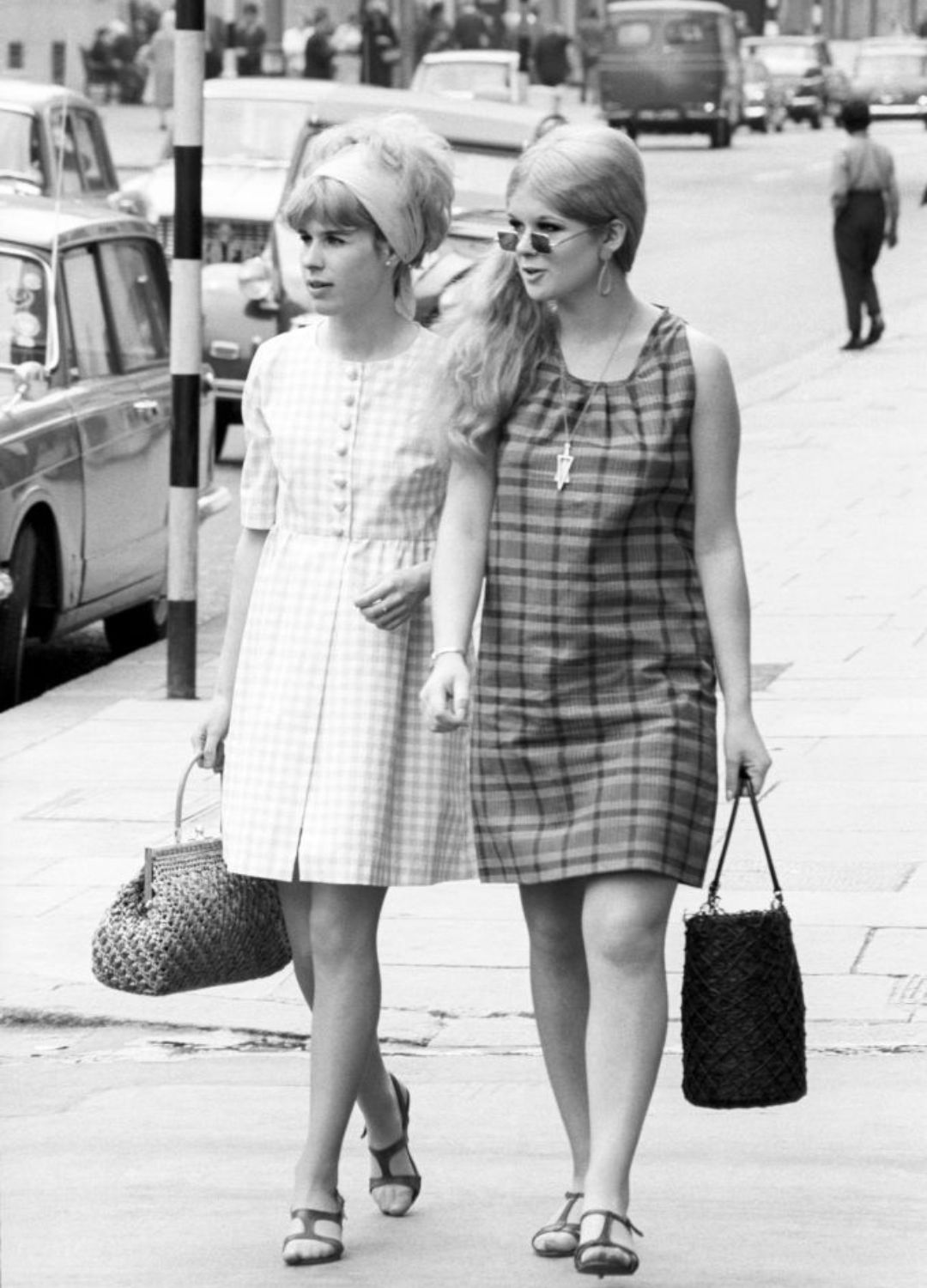
Although shift dresses already existed before the 1960s they were reimagined during this era, with a looser fit, shorter hemlines and higher necklines to counterbalance their micro length.
Vibrant colours
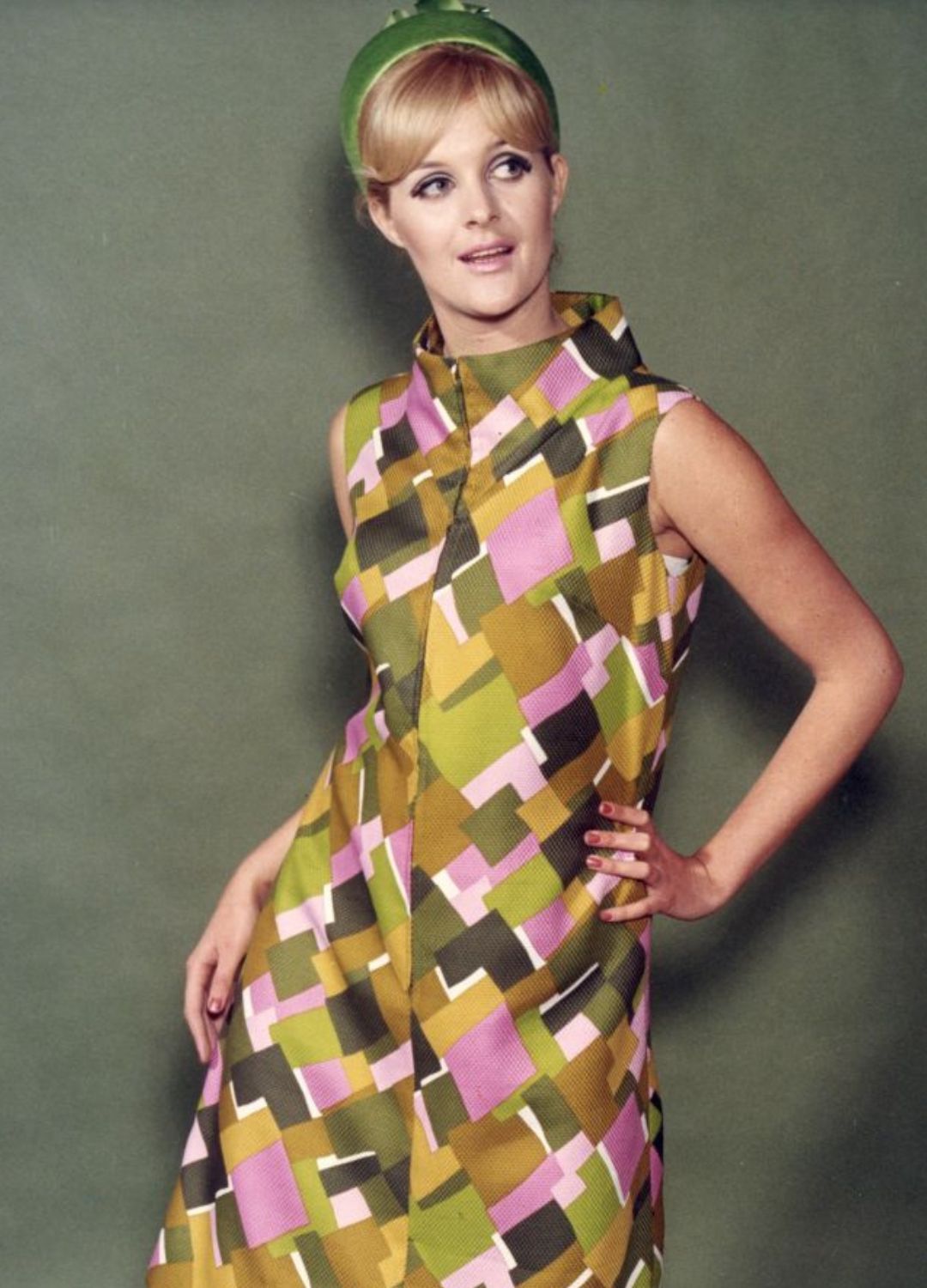
This picture epitomises '60s style, from the model's sweeping bangs held back by an oversized headband to her long lashes and mini dress. But what really caught our eye here is the bright print of the dress, featuring pink, green and black hues in a bold geometric pattern.
Paisley pattern
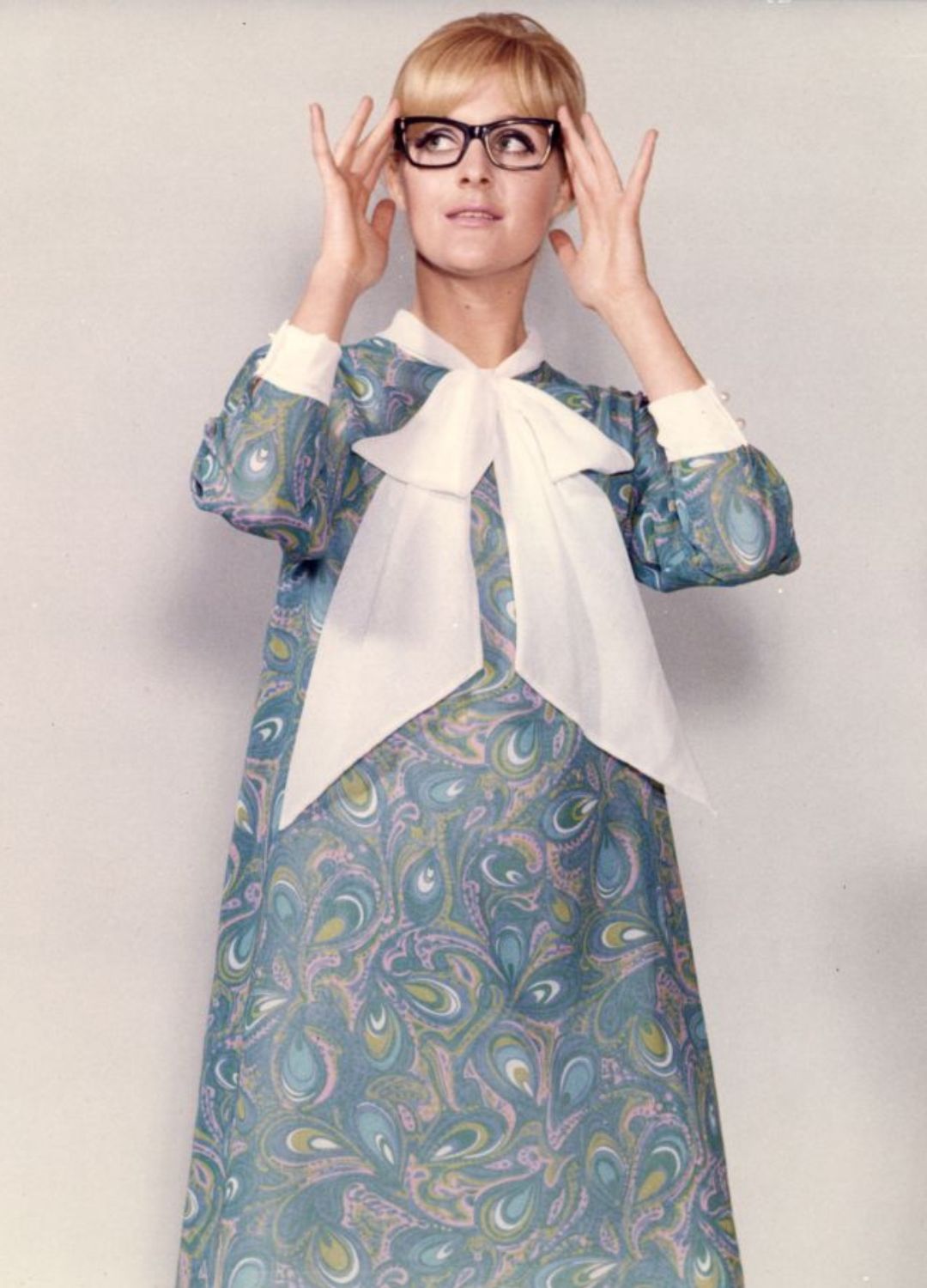
A pattern with timeless appeal, Paisley print might have been created in Persia in 200 AD, but it had a big moment in the 1960s - not surprising, considering the fashion set's penchant at the time for vibrant colours and swirling patterns.
Peter pan collars
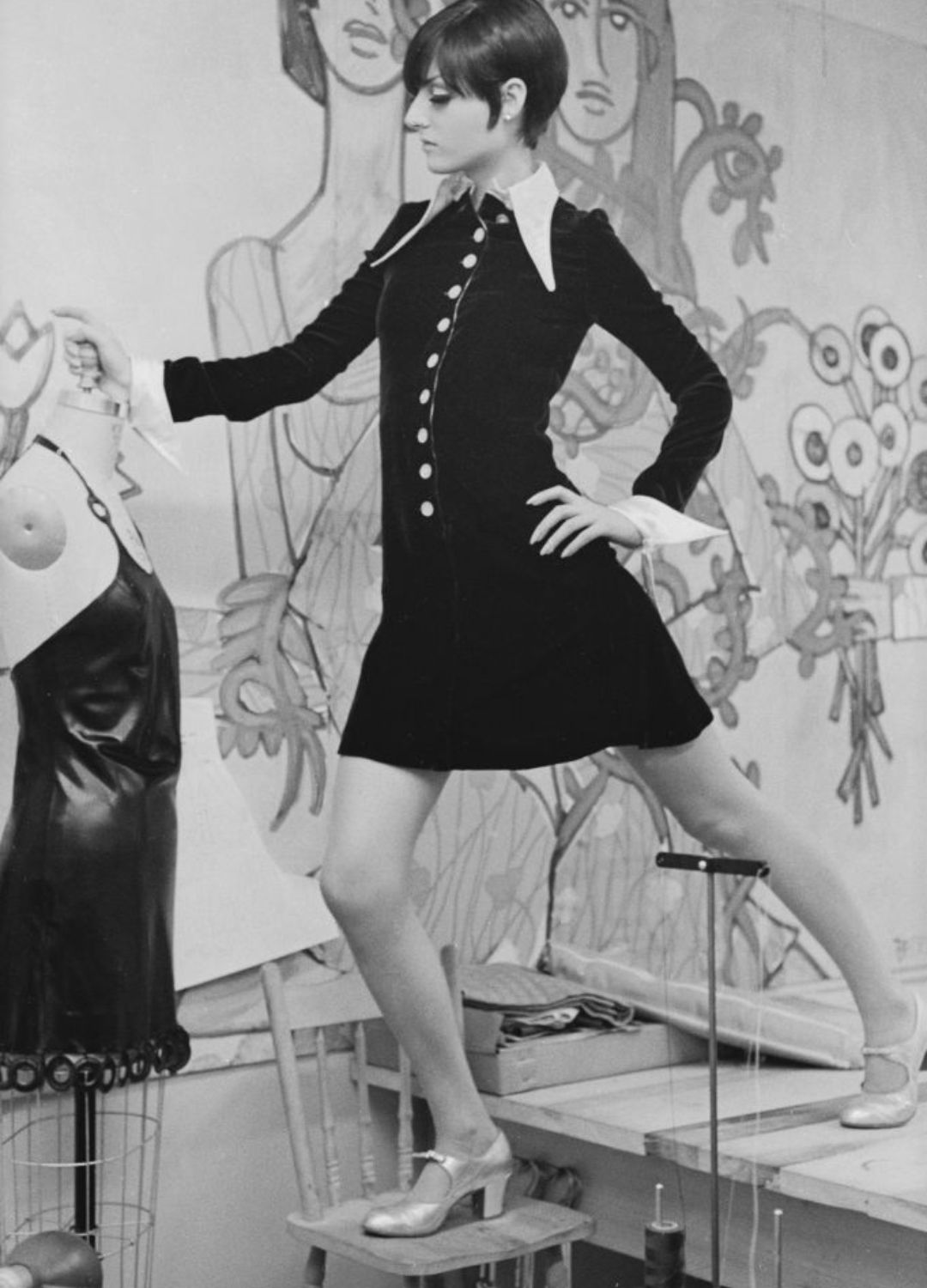
To balance the hiked up hemlines, dresses of the era often featured higher necklines - with peter pan collars becoming popular. While the most common type was a rounded collar, many designers featured exaggerated, oversized iterations like the one pictured.
Floral motifs
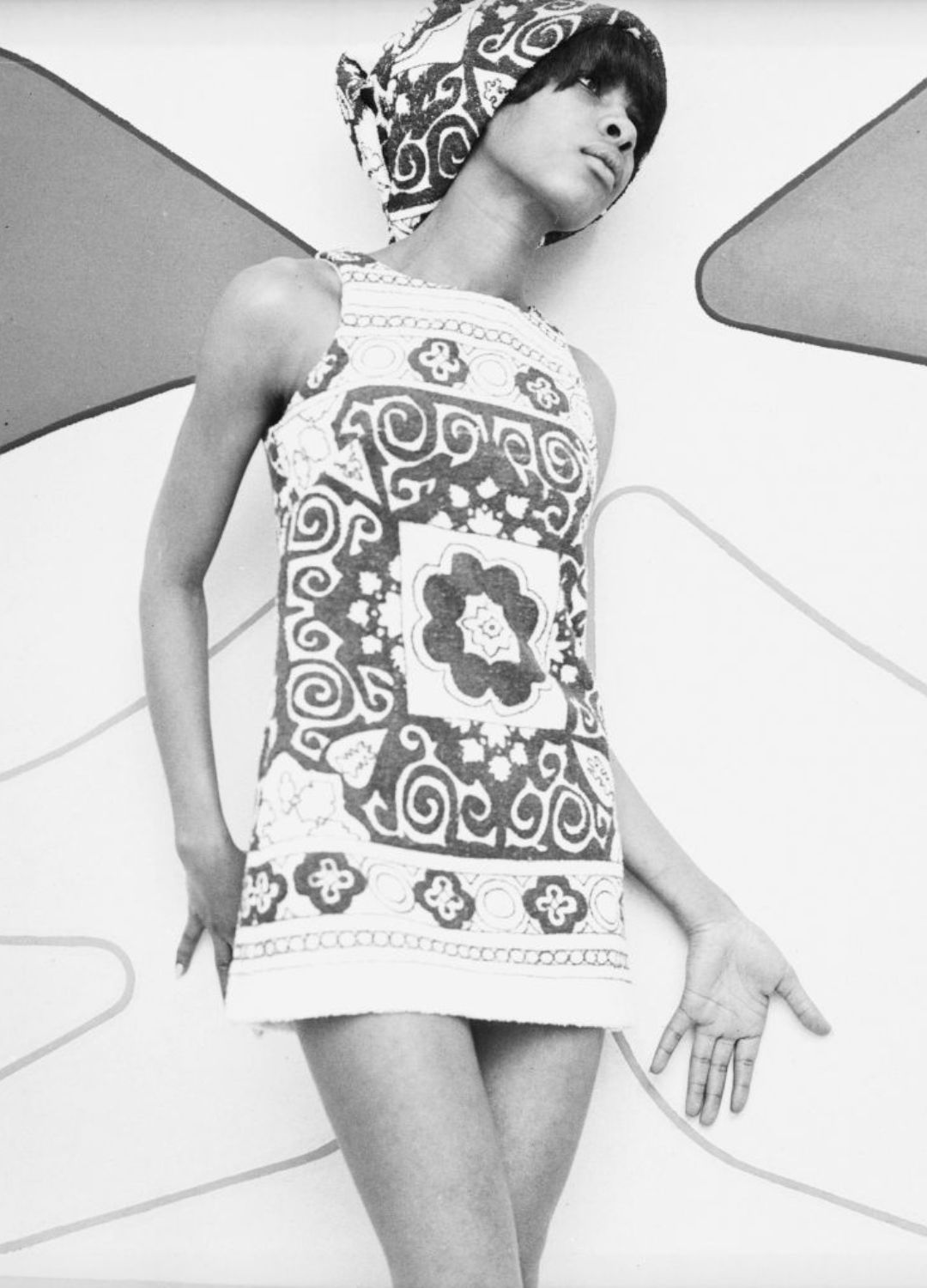
It wasn't only the free-love hippies that enjoyed floral prints and motifs in the '60s - motifs were also popular on the mini dresses and beachwear of the time. Bold, stylised floral designs bloomed during this era and remain popular to this day.
Psychedelic prints
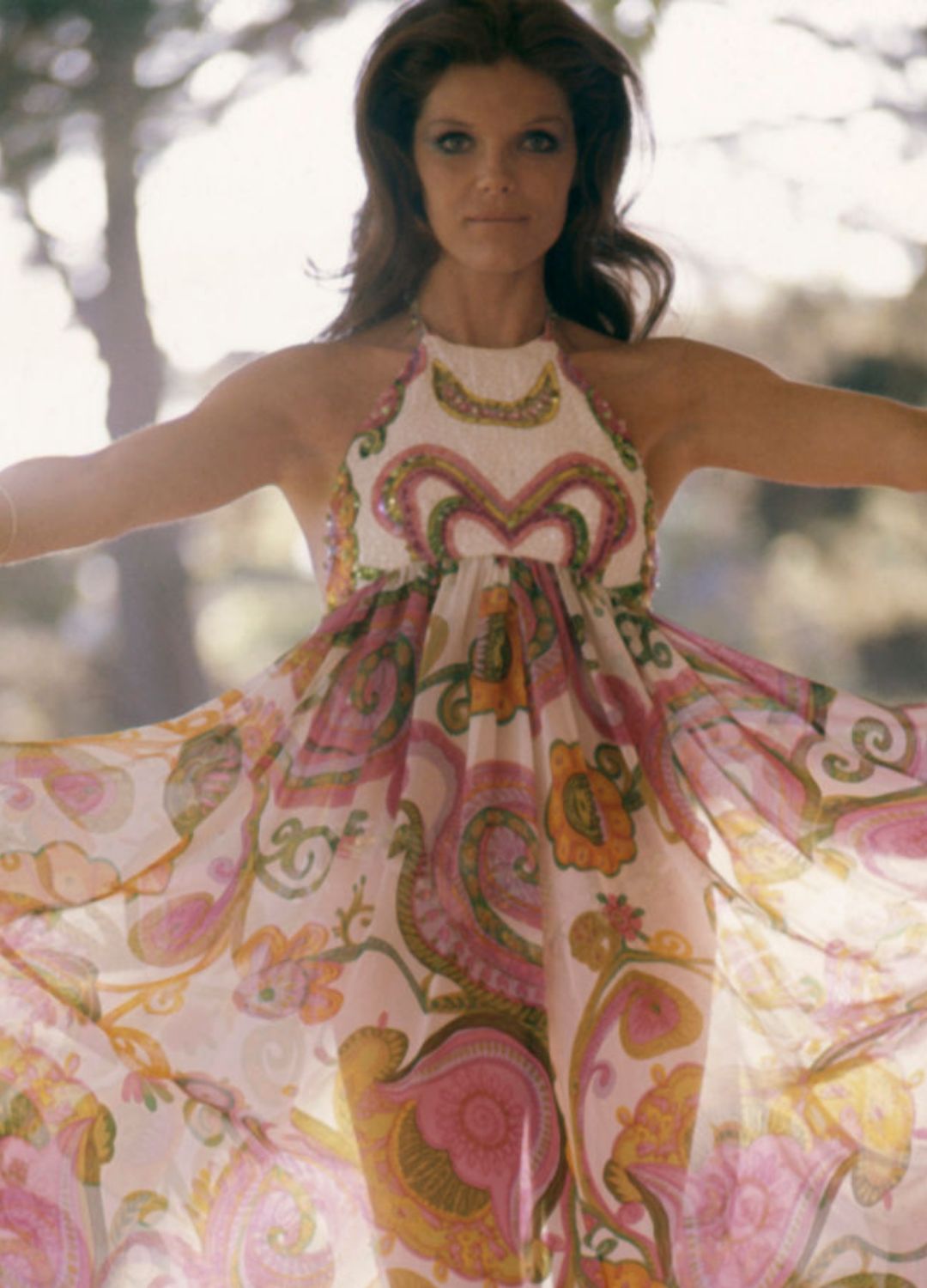
Psychedelic swirls, trippy patterns and colourful paisley prints were everywhere in the '60s, becoming particularly popular from the middle of the decade, through until the 70s.
The rise of trousers
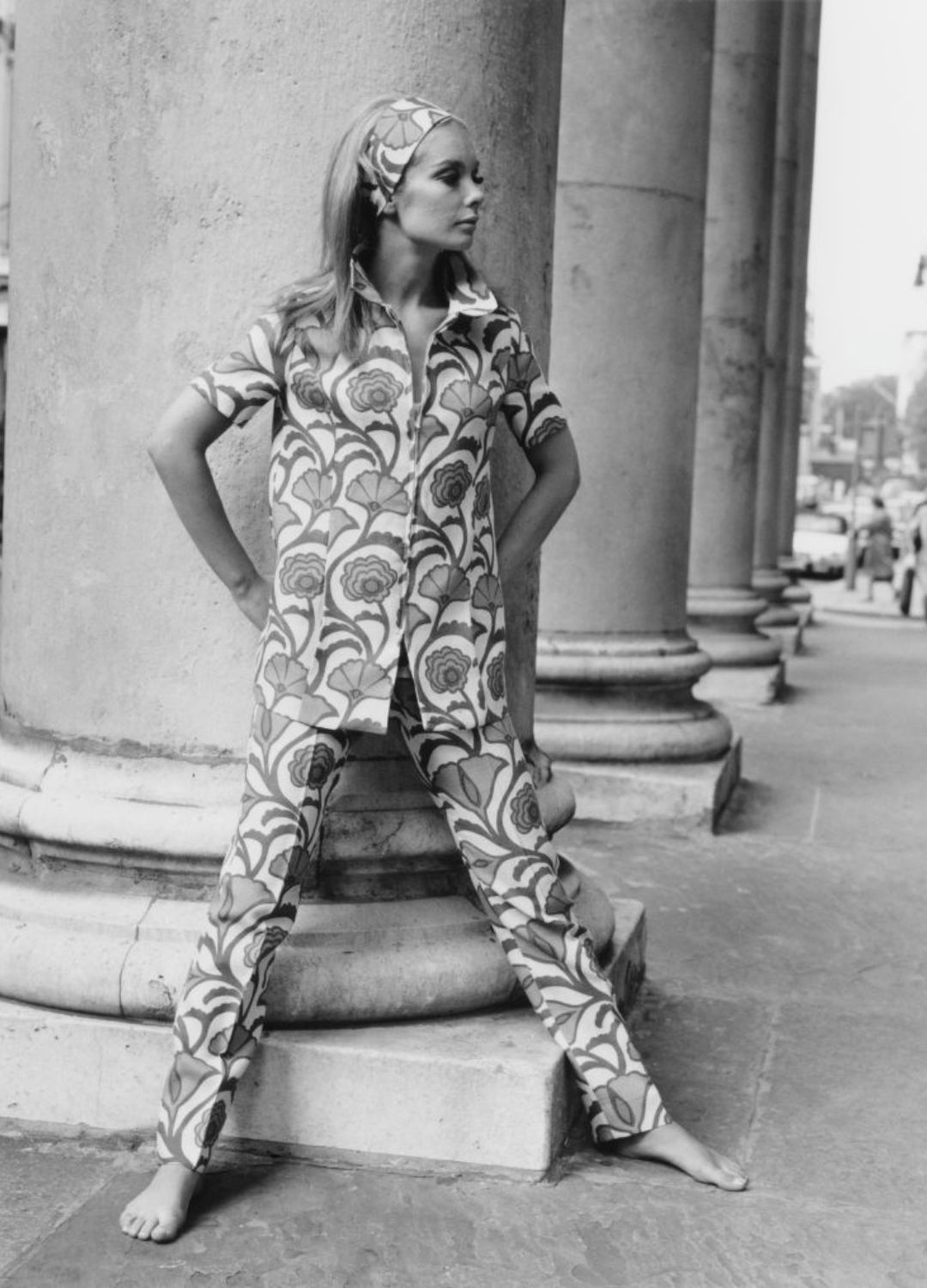
As the younger generation eschewed gender norms, with men embracing billowing sleeves and tight fits, women also increasingly swapped their dresses and skirts for trousers. From suits to stylish jeans and Capri-style pants, casual dress became increasingly more unisex.
Leopard print
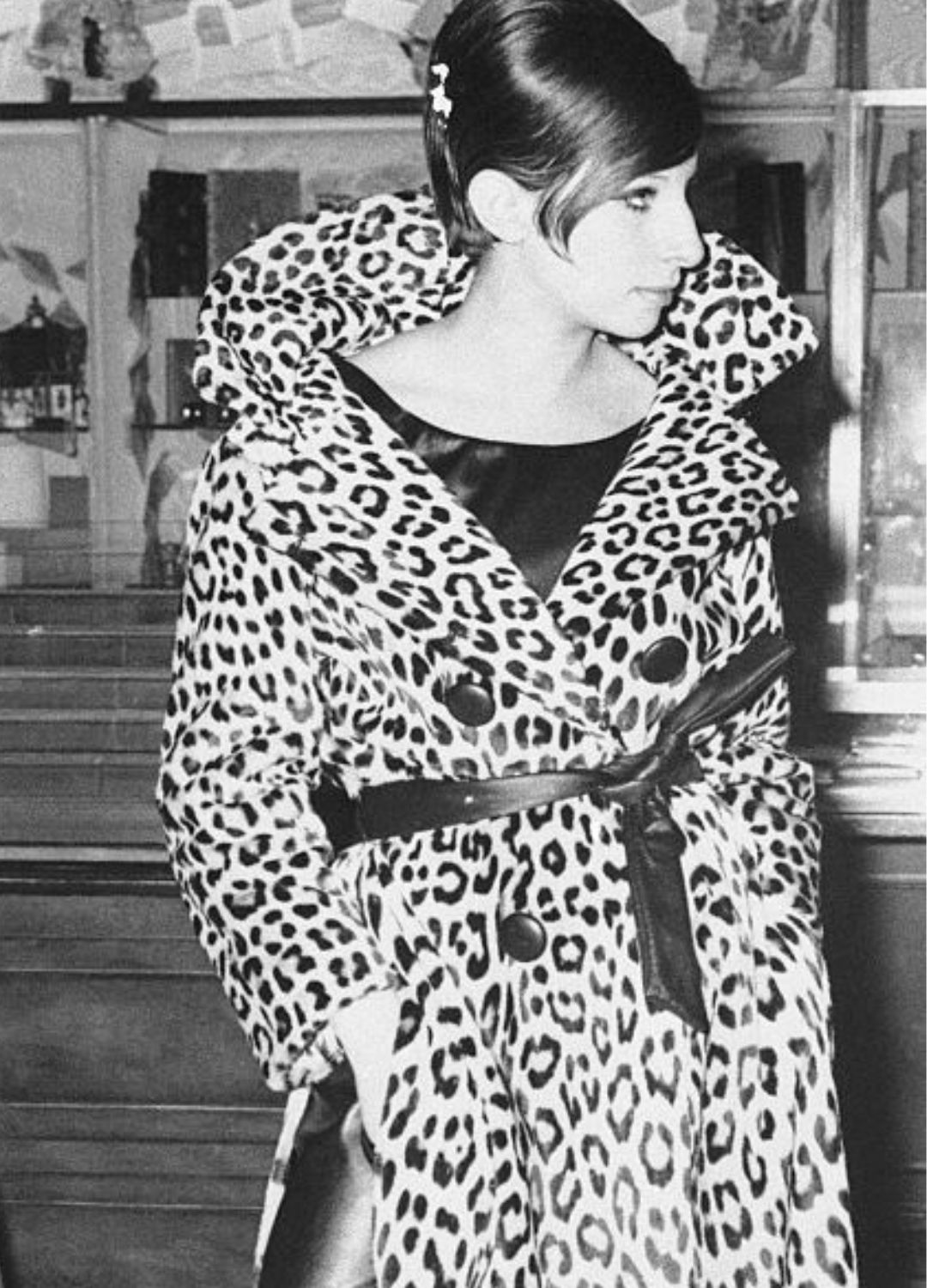
Let's face it, when has leopard print not been popular? A popular print during the opulent Jazz Age of the 1930s and then again in the 1940s and 1950s, often spotted on glamorous Hollywood stars, it had already been a stylish print for decades by the time the '60s rolled around. But in the 1960s it became edgier, more rock and roll. Better yet, while some still favoured real fur, it became increasingly more common - and preferable - to opt for faux fur instead of the real deal.
Beehives
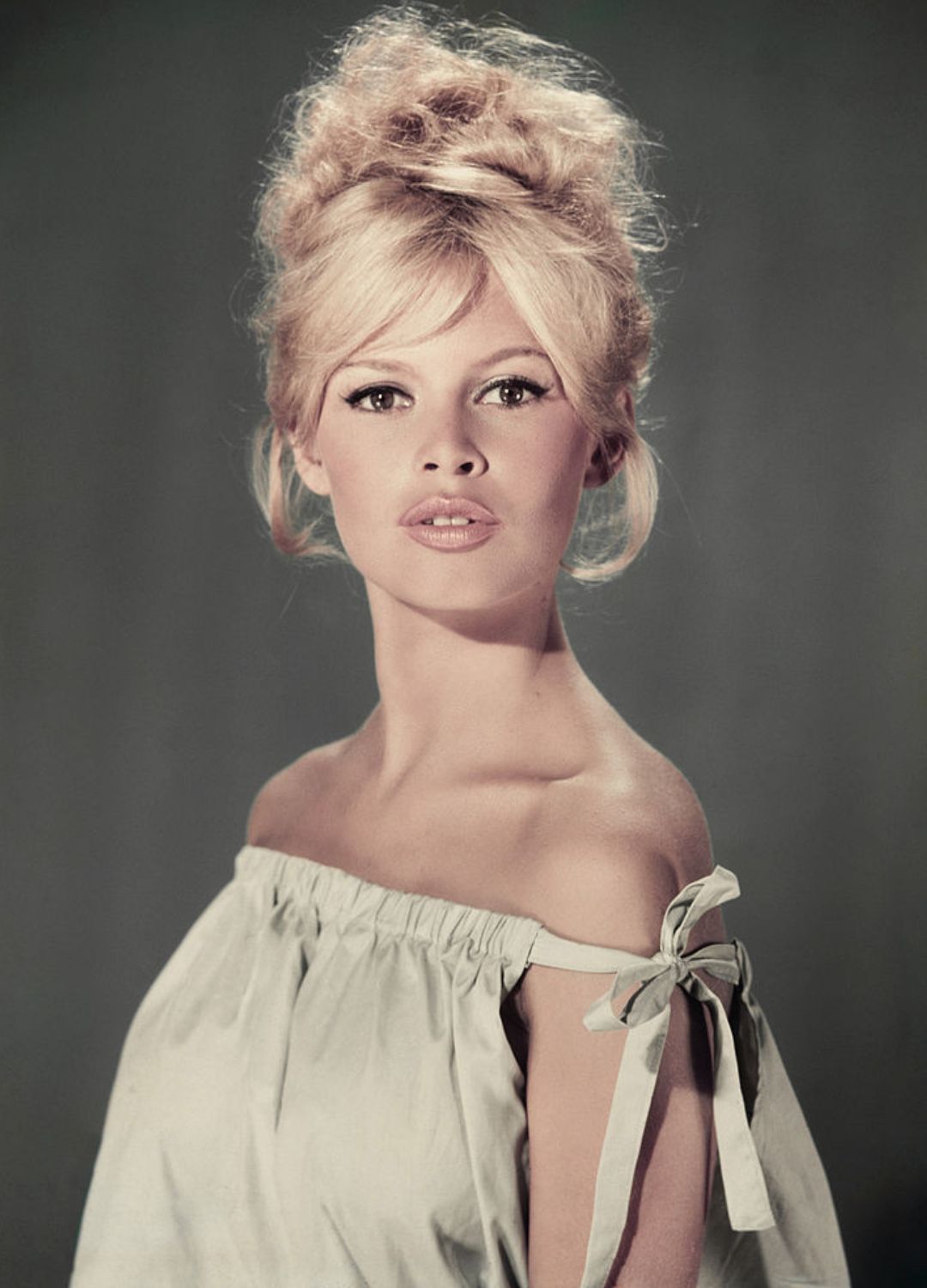
The beehive hairstyle was invented by Chicago-based hairstylist Margaret Vinci Heldt in the 1960s, and it quickly gained popularity worldwide, being embraced by icons like Brigitte Bardot (pictured), Dusty Springfield, Audrey Hepburn, and many others.
Speaking about the ubiquitous 'do, Margaret told the Toronto Star in 2011, "It was an instant hit. It made women feel taller and more elegant, refined and glamorous."
Space Age fashion

The space race in the 1960s had designers clambering to create futuristic designs that reflected their imagined intergalactic future. Futuristic designs were all over the catwalk, featuring chain mail, vinyl and PVC, often in metallic and white tones.
Berets
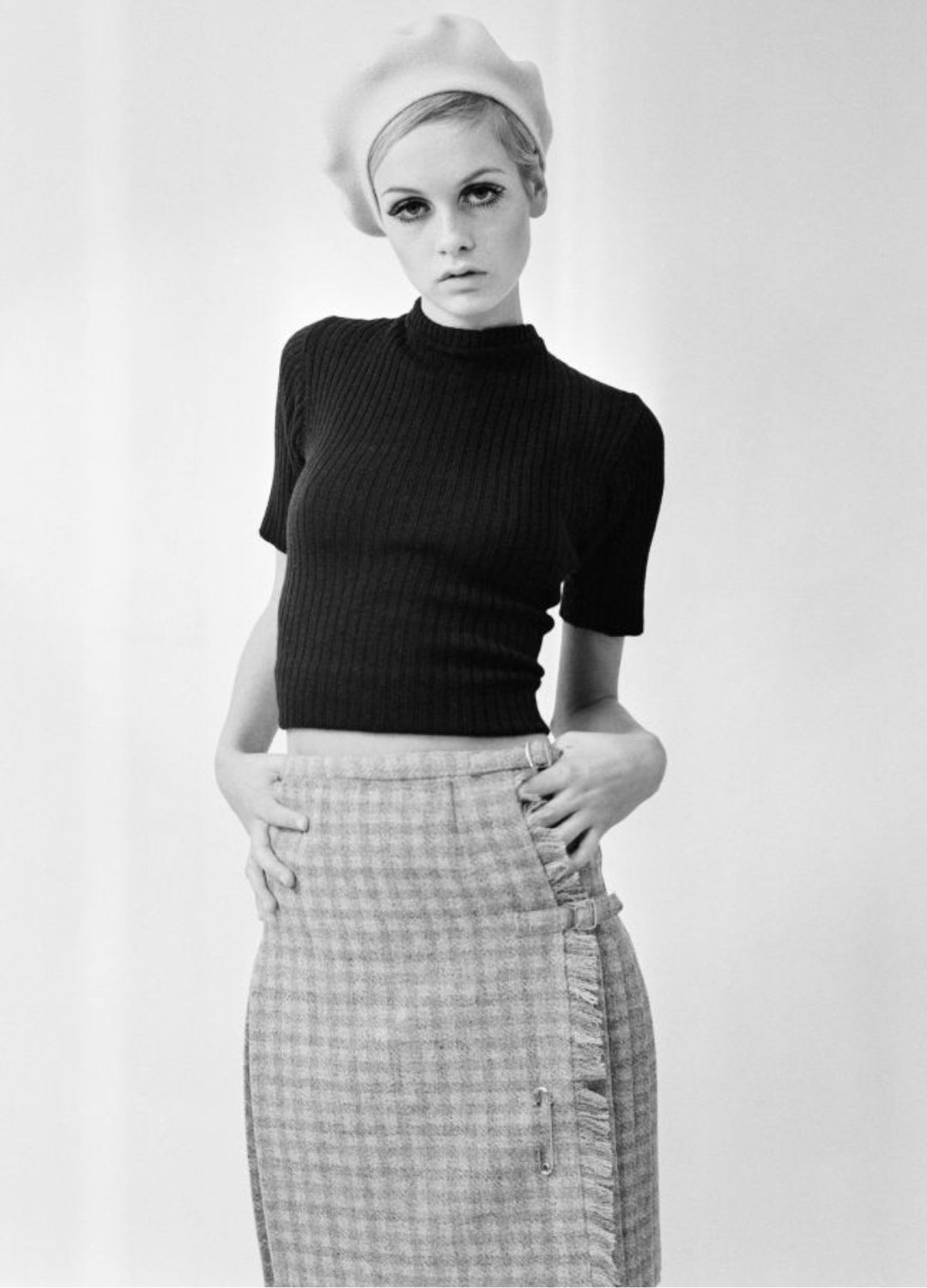
When it comes to 1960s fashion icons, Twiggy and Mary Quant are probably the first names that spring to mind and just about every photograph of the it girls perfectly encapsulate the style of the era. From the beret to the bambi lashes, knitted polo neck and plaid skirt, this picture of Twiggy epitomises some of the most iconic styles of the era.
Coloured tights
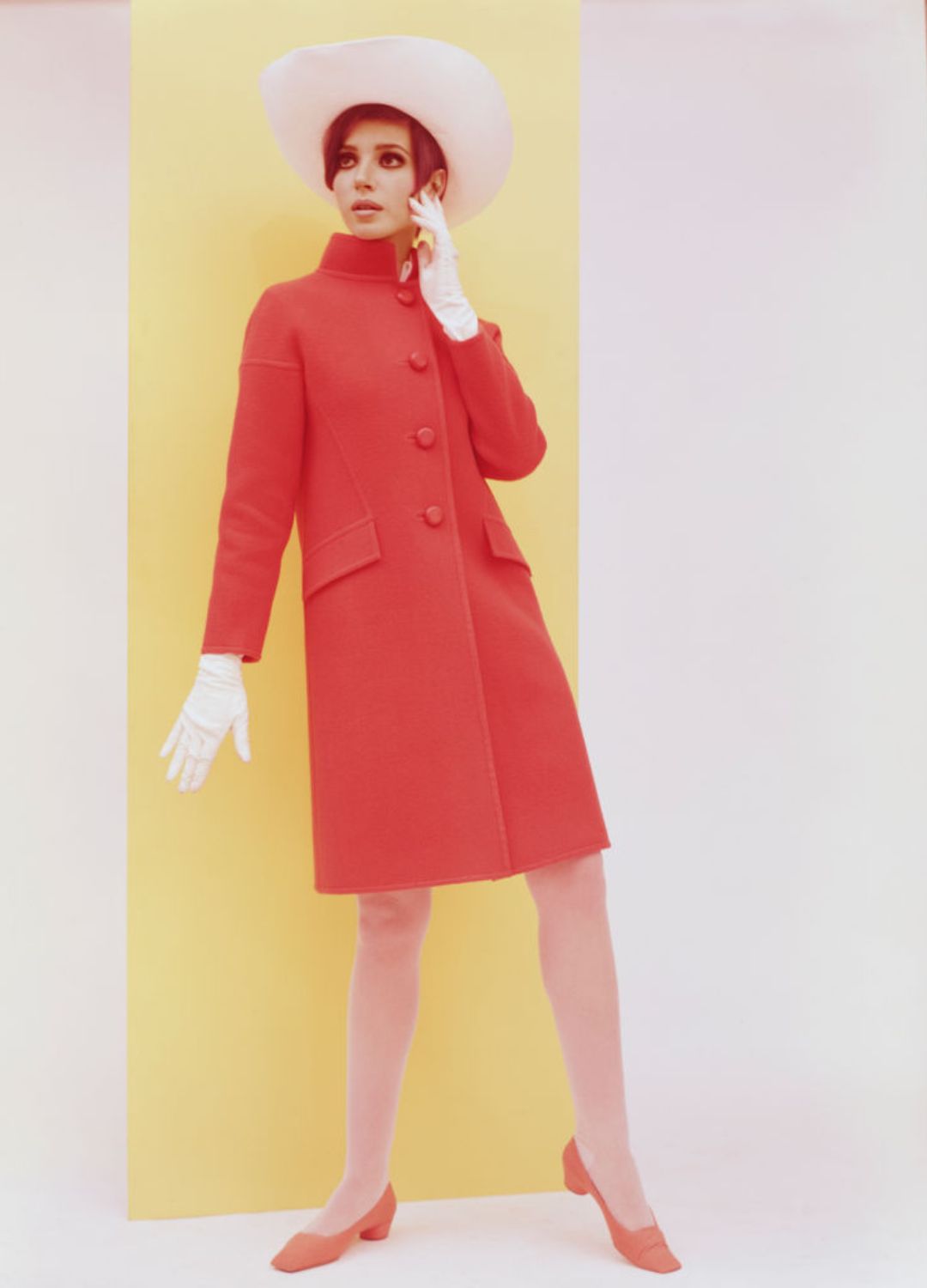
Wearing a mini skirt (or dress) in winter in the UK isn't for the faint hearted, at least not without a pair of thick, opaque tights. But who said they need to be black? Bold, colourful tights in an array of different hues were the perfect finishing touch to any mod outfit.
Carnaby Street style
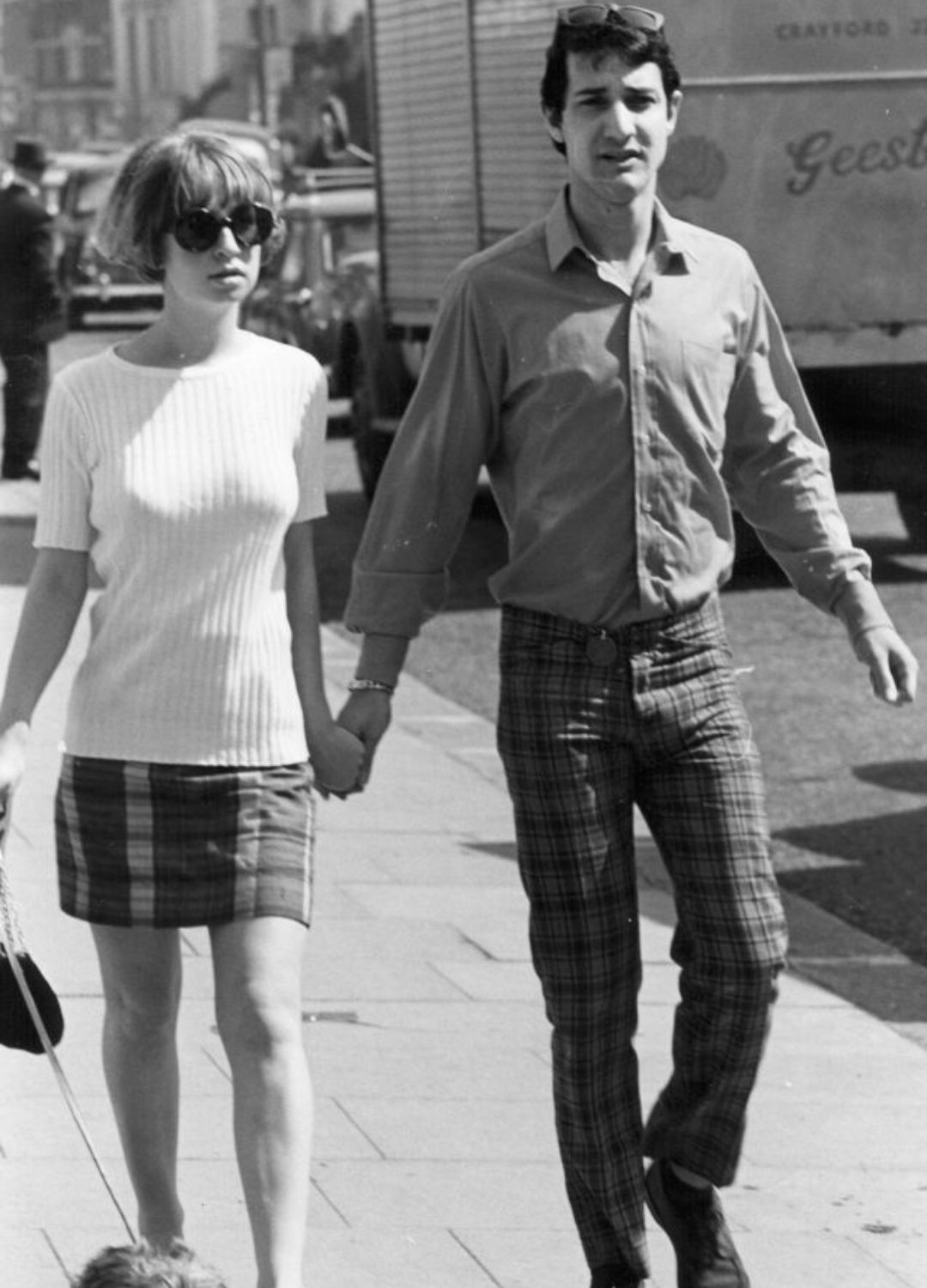
Perhaps the epicentre of the UK 'Swinging Sixties' movement, Carnaby Street was the place to be, filled with independent boutiques from emerging designers whose influence reverberated around the world. Mary Quant, John Stephen and Sally Tuffin were among the trailblazing designers who held shop on the street at the time.
Defying gender norms
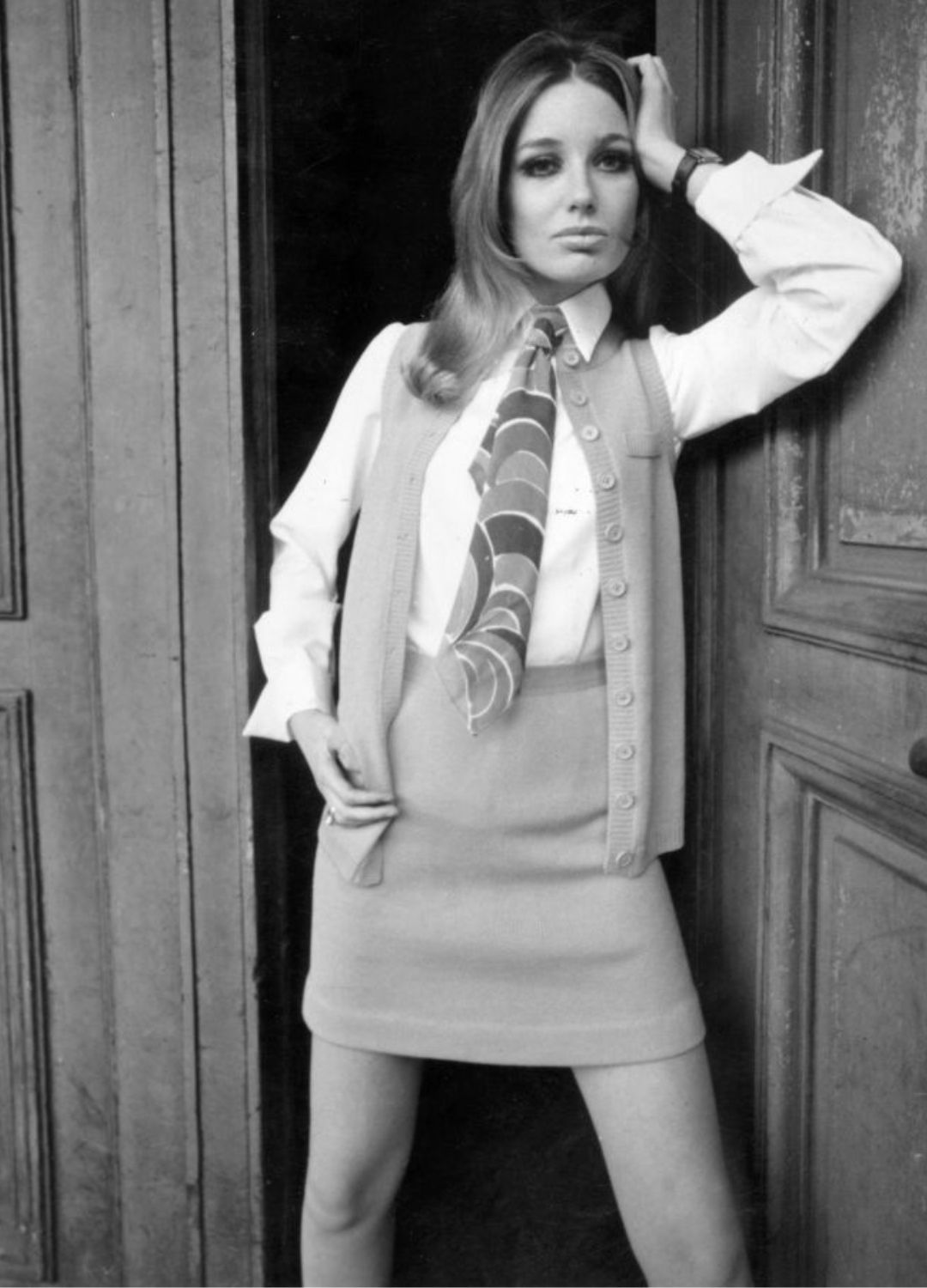
The 1960s saw the rise of unisex fashion as the younger generation tore up the rulebook regarding gender norms, with men and women often shopping the same collections at many boutiques.
Crochet
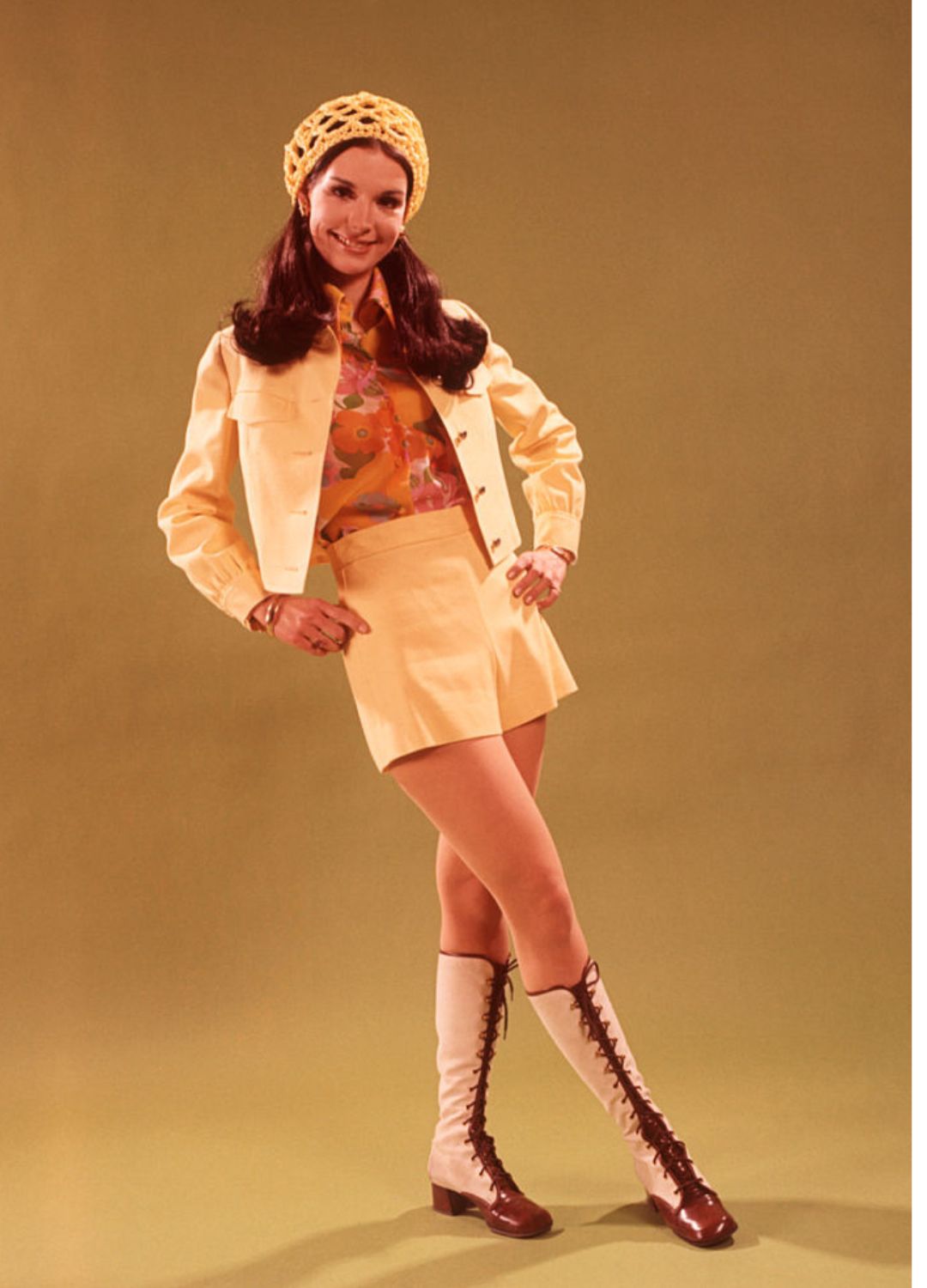
Popular in hippie styles of the era, but also in more mainstream styles, boho crocheted styles were everywhere in the 1960s, featuring in waistcoats, hats and dresses.
Maryjane shoes
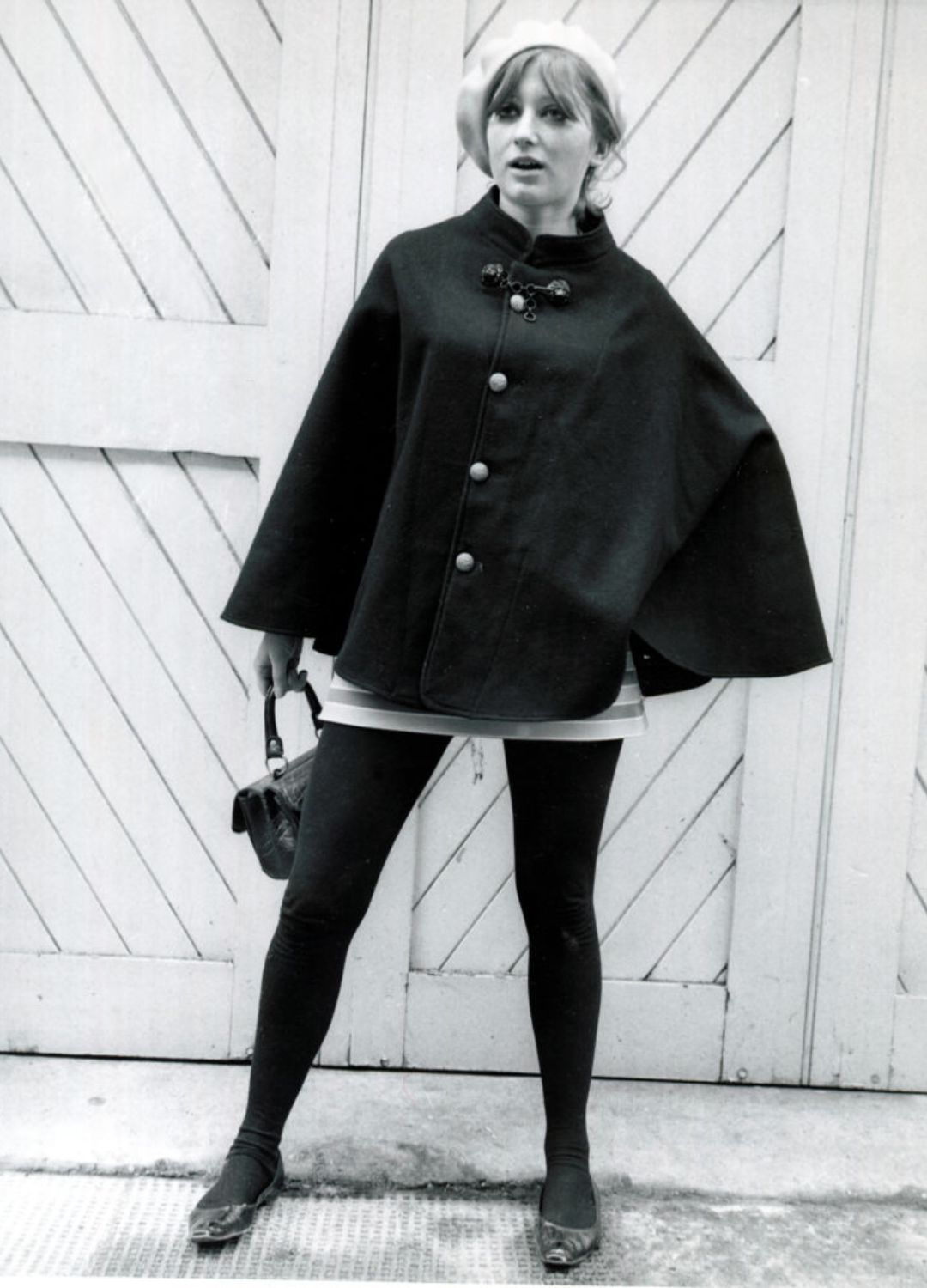
Often paired with mod outfits or babydoll dresses, Mary Jane shoes evolved from being a go-to staple for school kids across the country to a chic and feminine choice for fashion-forward women.
Textured cable knits
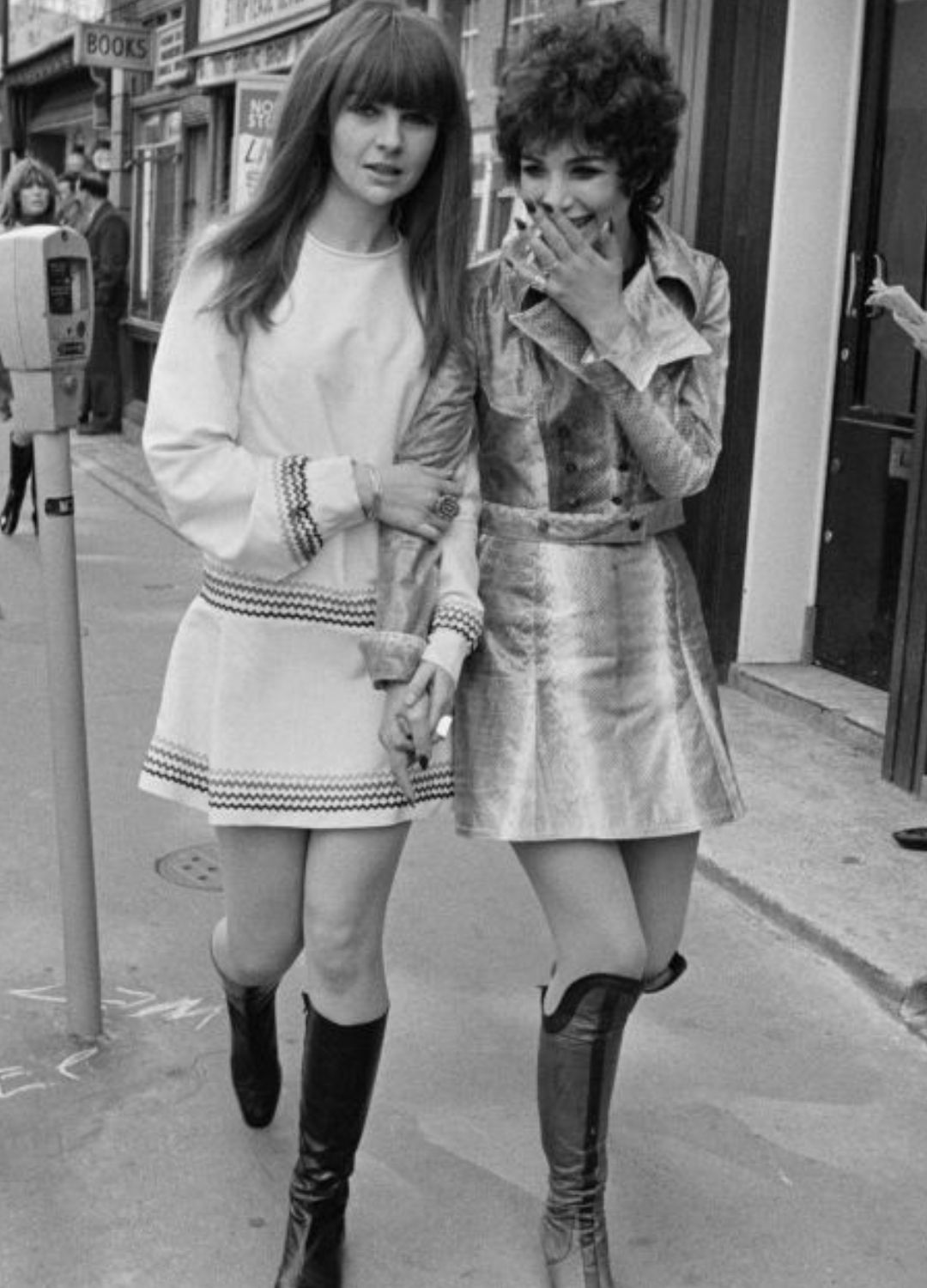
Jersey dresses and co-ords (with a short hemline, naturally) became popular in the '60s. Practical and affordable, swapping wool for more affordable acrylic-based materials, this style was largely popularised by Mary Quant who launched a plethora of casual knitwear designs during the era.
Oversized glasses
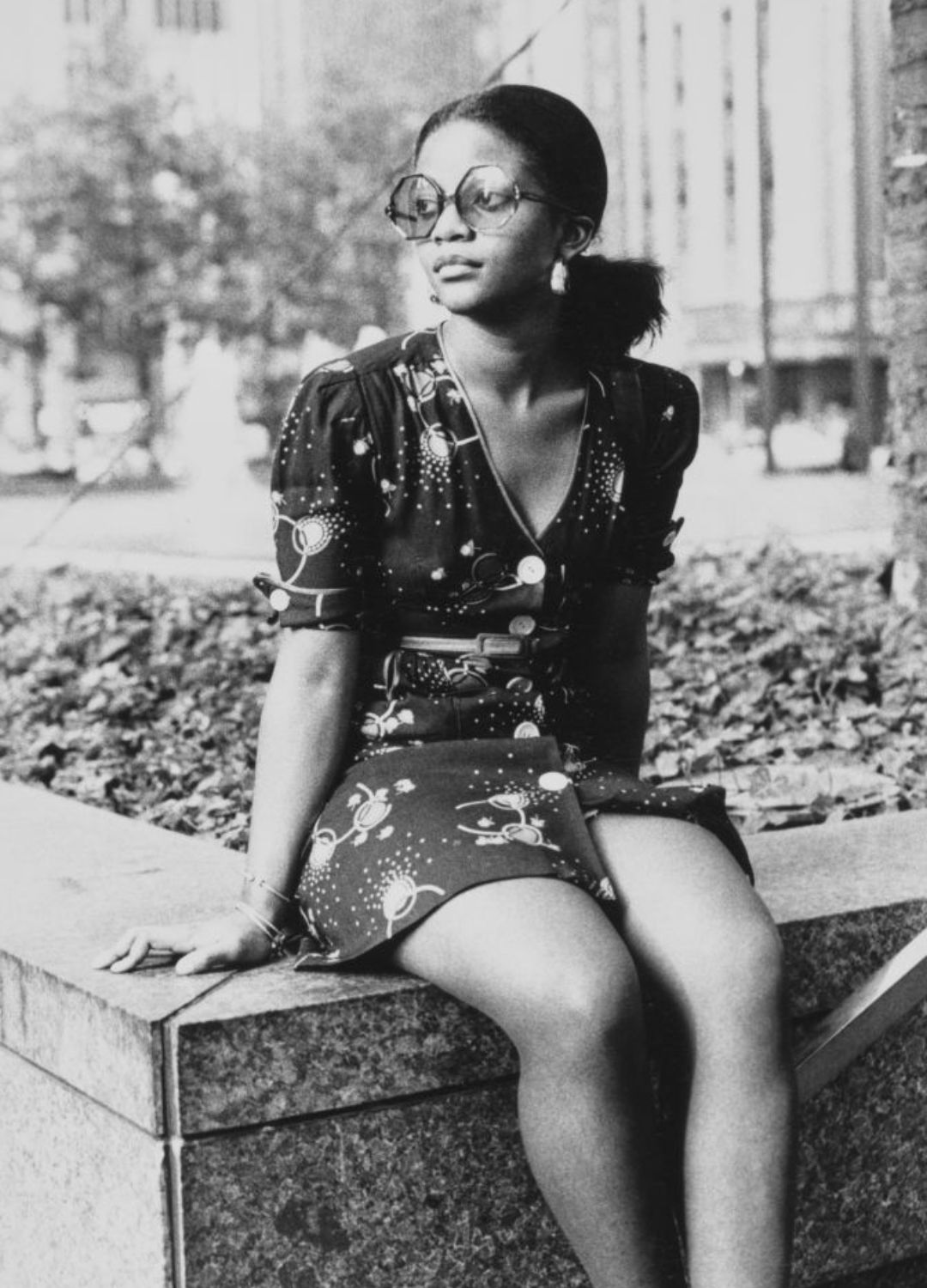
Whether eyeglasses or sunglasses, oversized frames were the go-to style of the era. Often round in shape, they provided a youthful and modern edge to any outfit.
Colour blocking
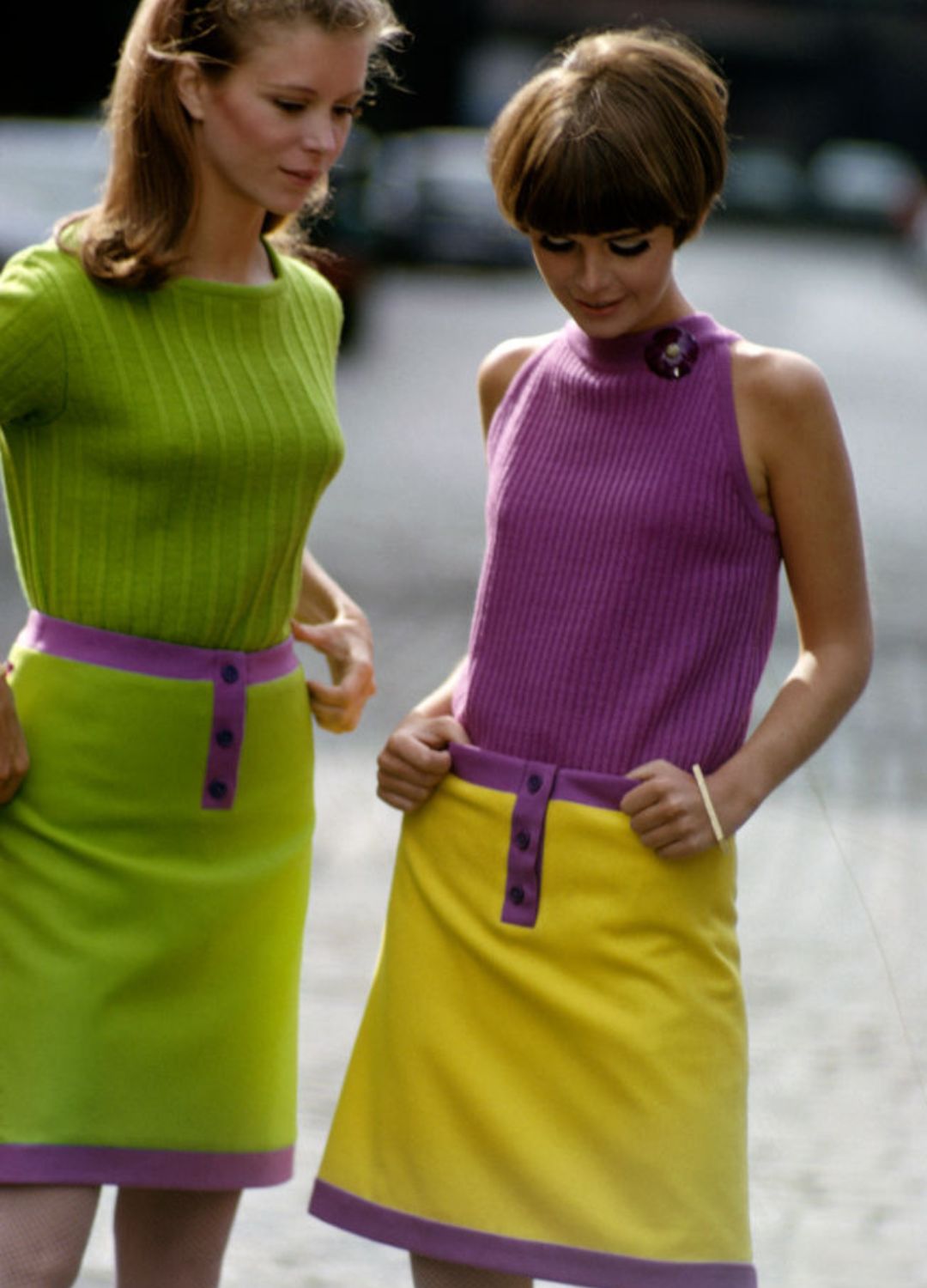
The 1960s were characterised by bright, bold hues. While pastels are perennially on-trend, they took something of a backseat during this decade. Varying shades of yellow, green, orange and magenta were particularly popular - and even better if they were paired together.
Flared jeans
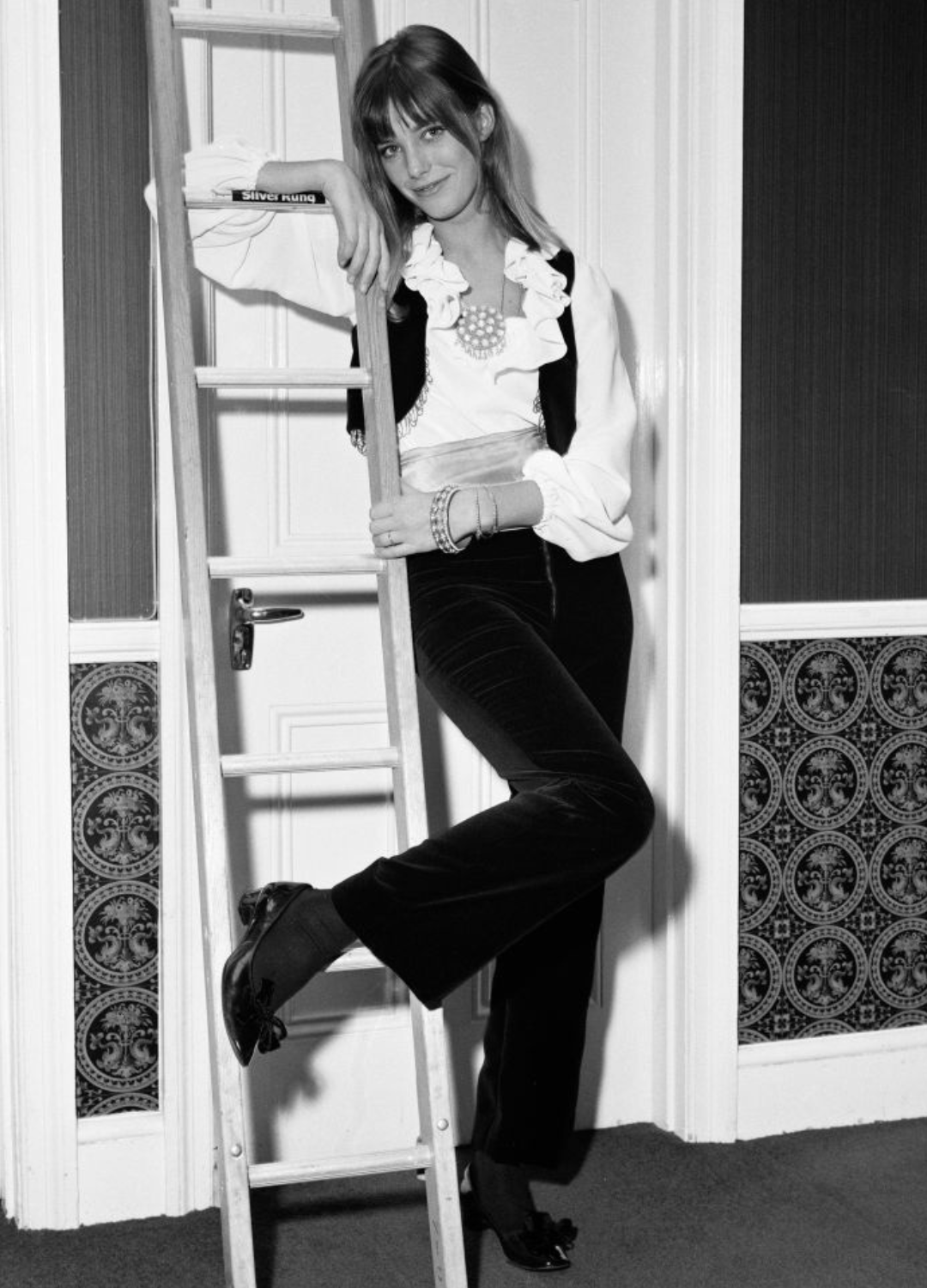
Flares - or bellbottoms - first took off in the mid '60s, and seem to re-emerge every few years. Here, Jane Birkin is pictured in 1967 in a black pair, teamed with a flouncy white shirt.
Vinyl
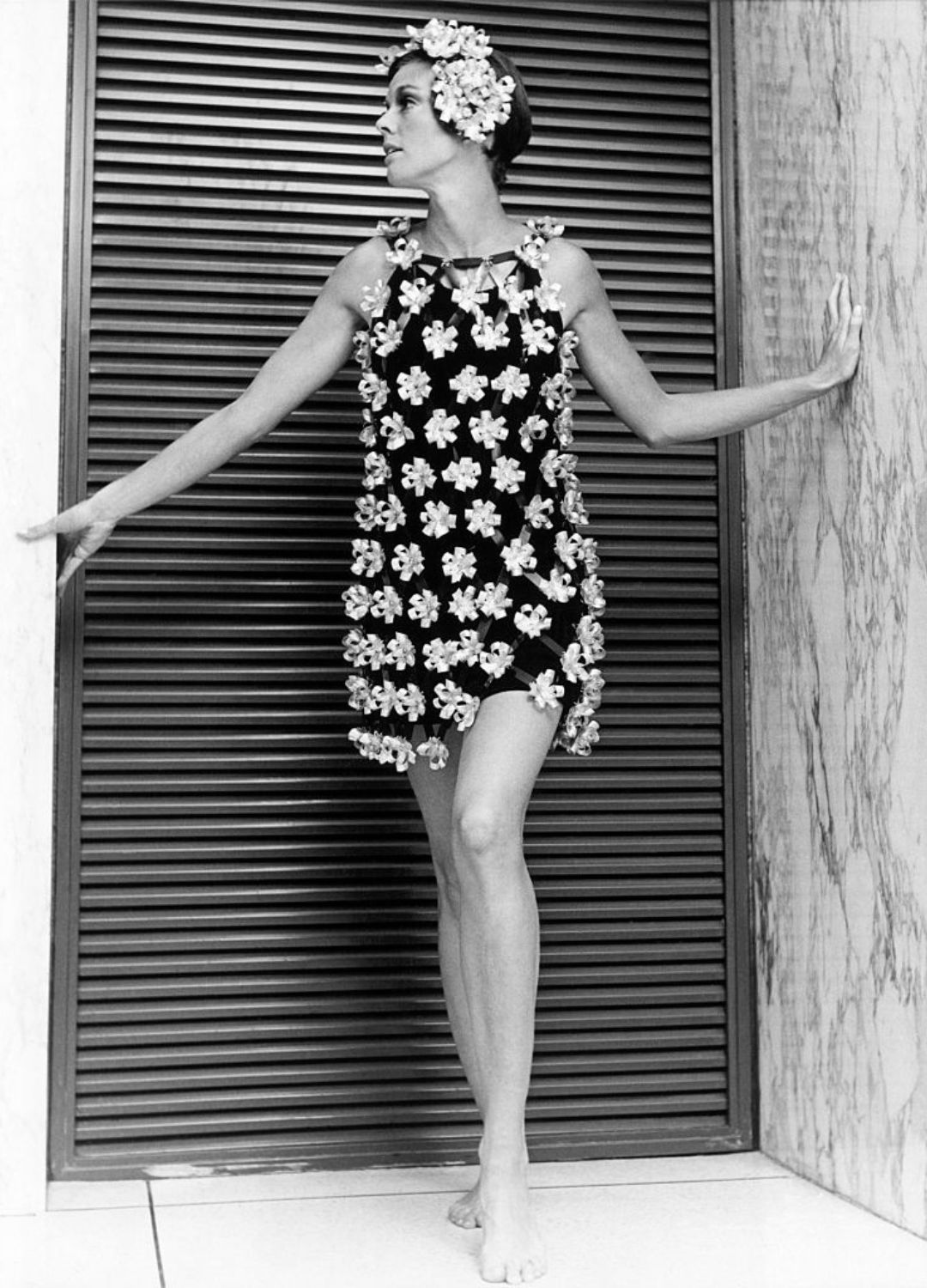
Designers in the '60s started to experiment with new, synthetic materials for the first time like vinyl, plastics, nylons, Spandex and PVC - all used to give a modern, textured edge to pieces.
High drama lashes
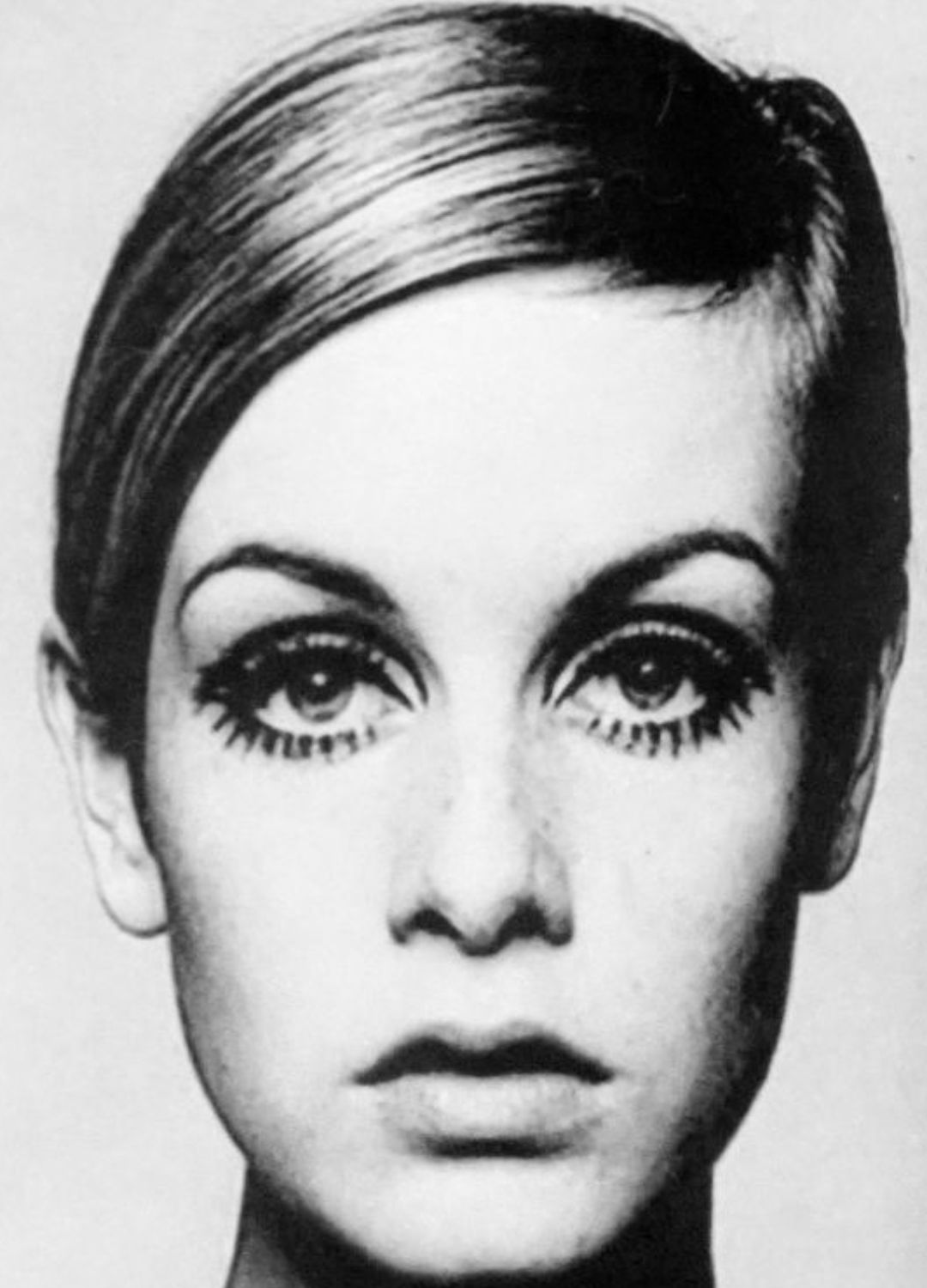
More of a beauty trend than a fashion one, but let's face it, no outfit was complete in the '60s without lashings of mascara or falsies - and this extended to the bottom lash line too.
Plaid
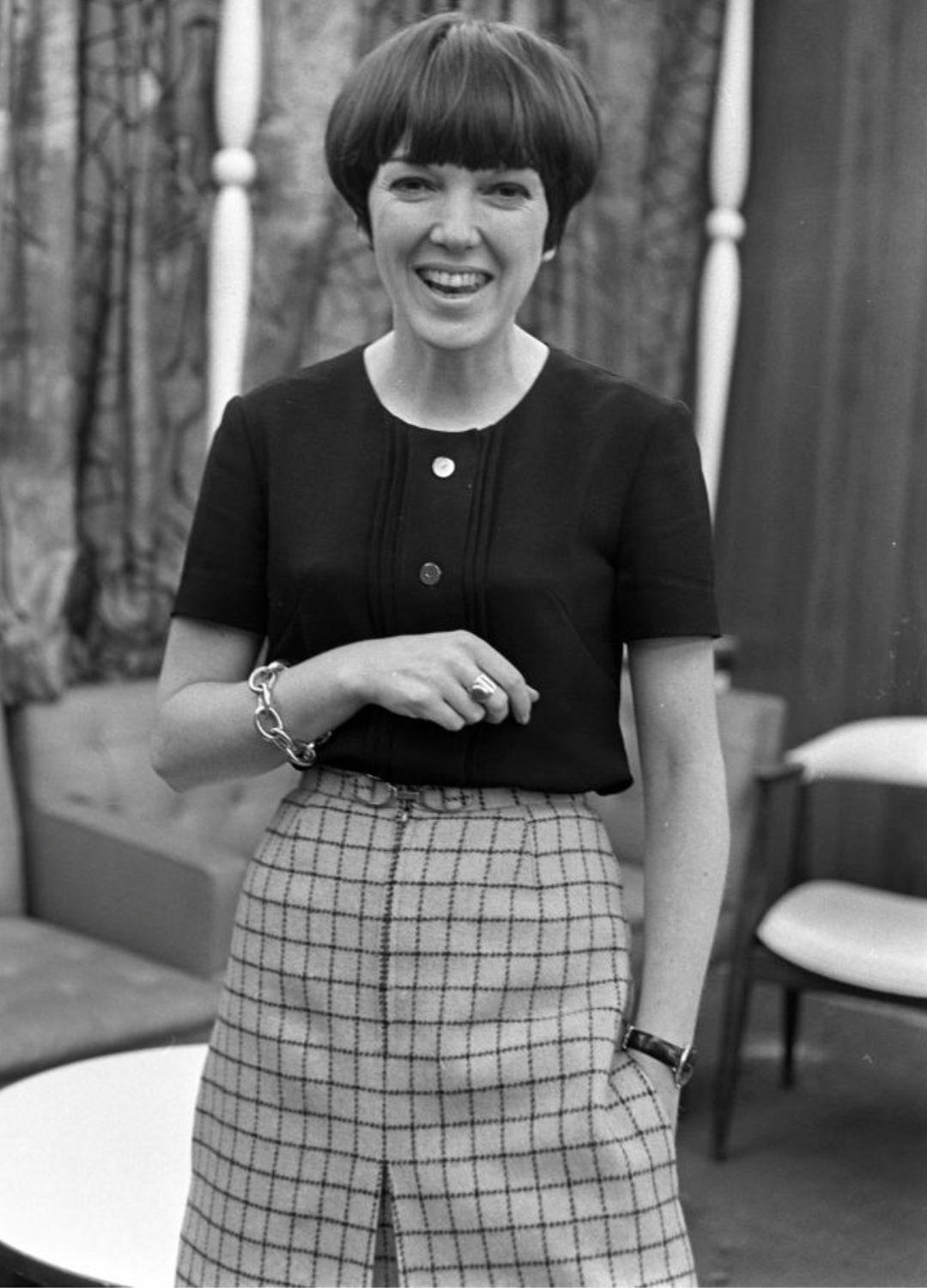
The mod-favourite material was popularised by Mary Quant in the 1960s, often featuring in tailored pieces and of course, the ubiquitous mini skirt.
Fringing
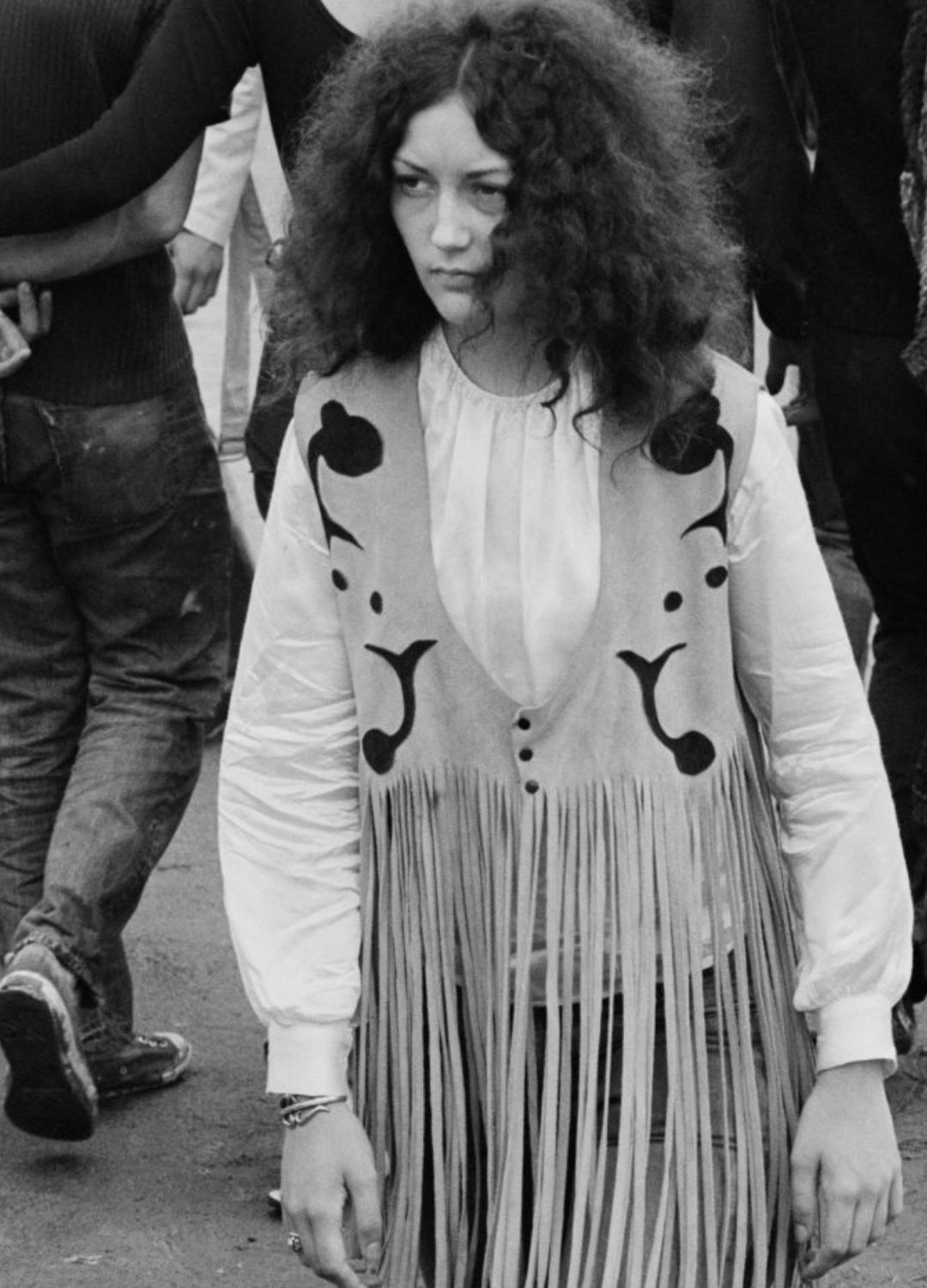
Hippie fashion started to seep into the mainstream by the late '60s, with crochet tops, flowy blouses, tie-dyed t-shirts and other relaxed styles becoming more and more popular as the '60s folded into the '70s. Fringe was also big news too - a style that still enjoys popularity today.
Baby smock dresses
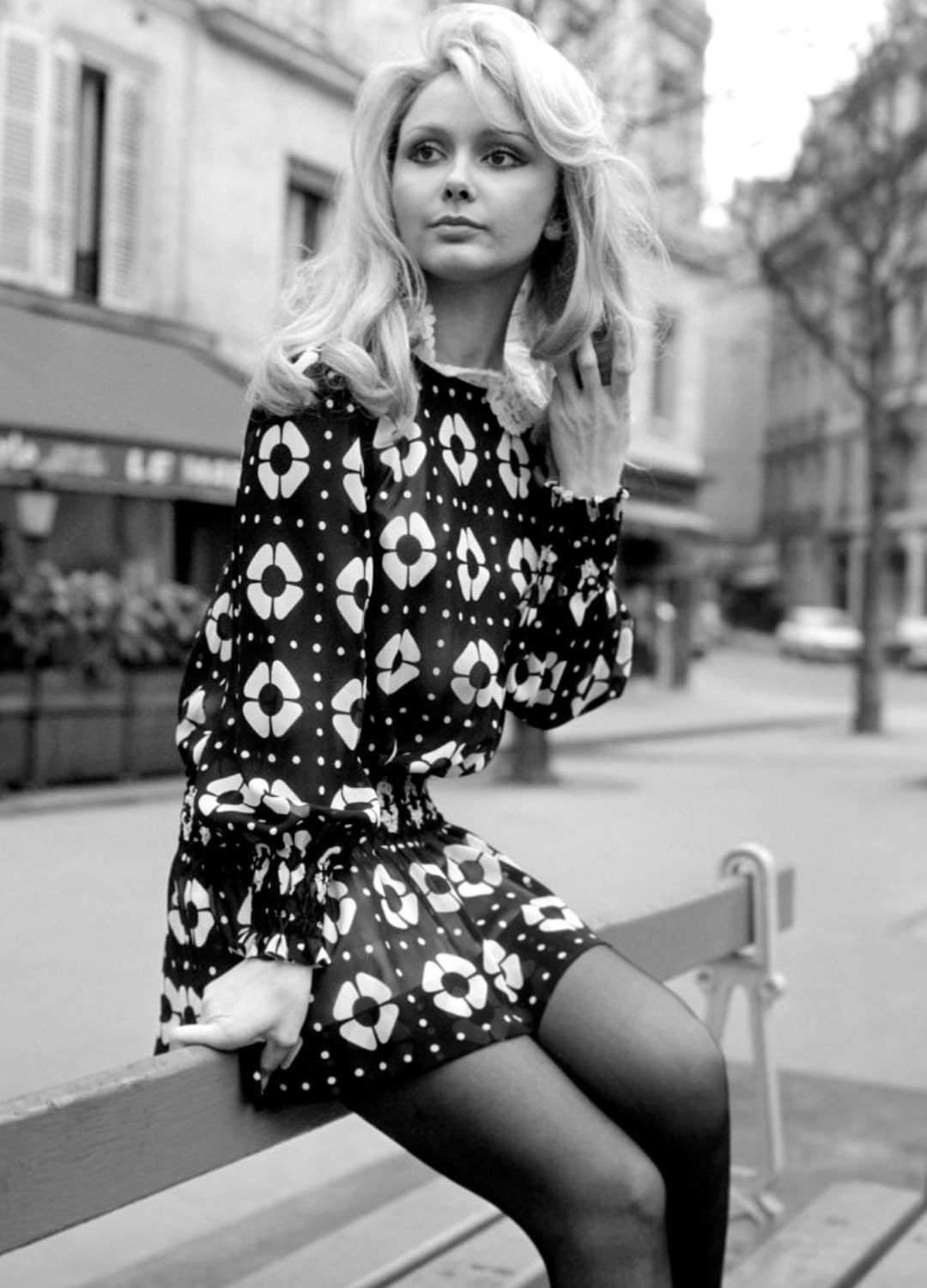
Smock dresses were big news in the '60s and so were mini dresses, so is it any surprise that baby smock dresses were also a popular style among the fashion set?
Headscarves
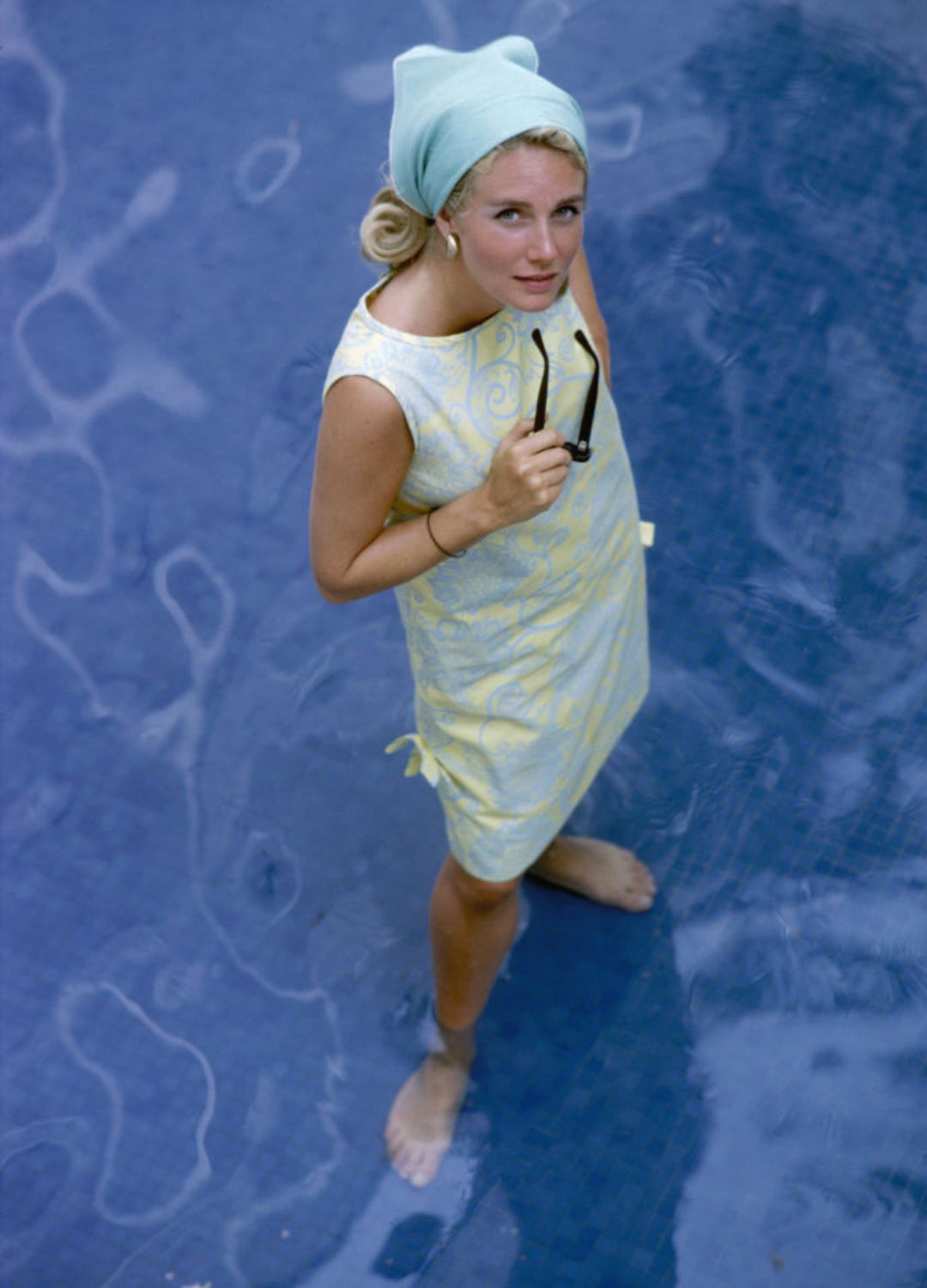
From swirling hippie patterns to block colours, headscarves remain a glamorous way to style your hair. Extra kudos if you style them with oversized sunglasses.
Houndstooth
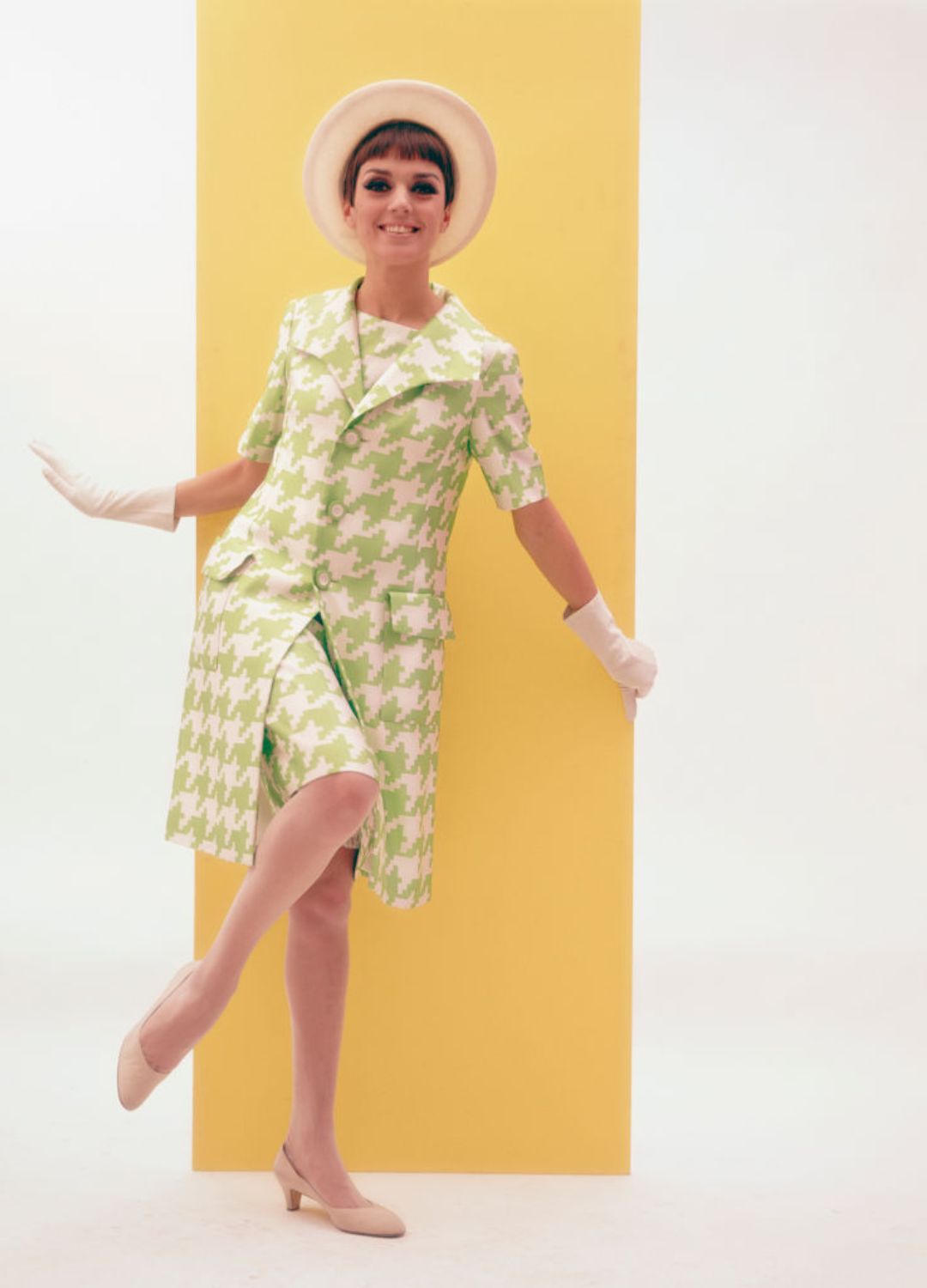
While houndstooth perhaps had its heyday in the 1930s, it was also a popular print in the '60s - this time, featuring brighter patterns and modern tailoring.
Beatlemania
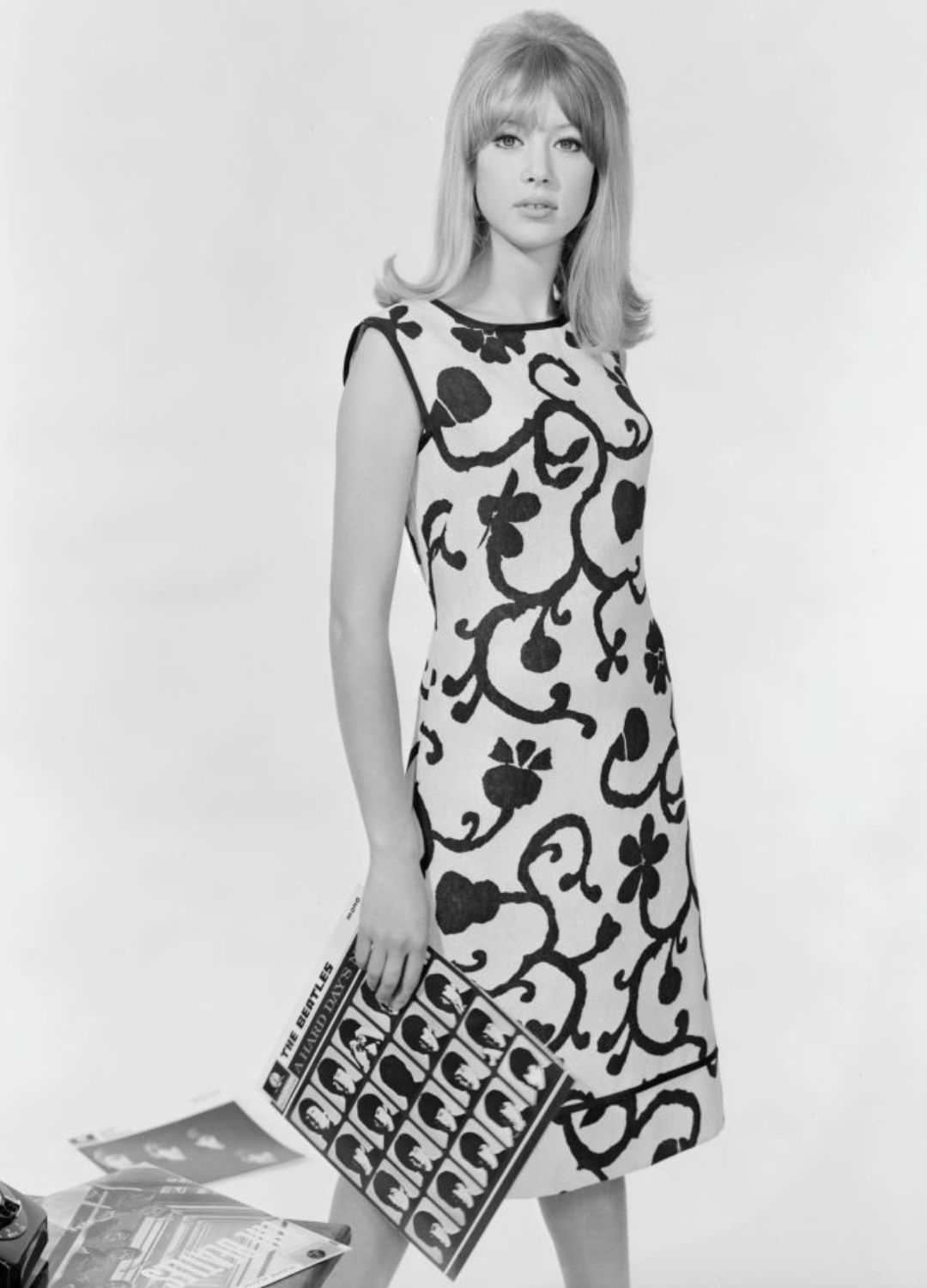
It would be remiss to talk about the '60s without mentioning The Beatles, whose wide-ranging influence shaped the fashion of the time. Their increasingly eclectic and bold style mostly influenced men's fashion of the era, but their individualistic approach also reflected women's style at the time.
Early Marimekko
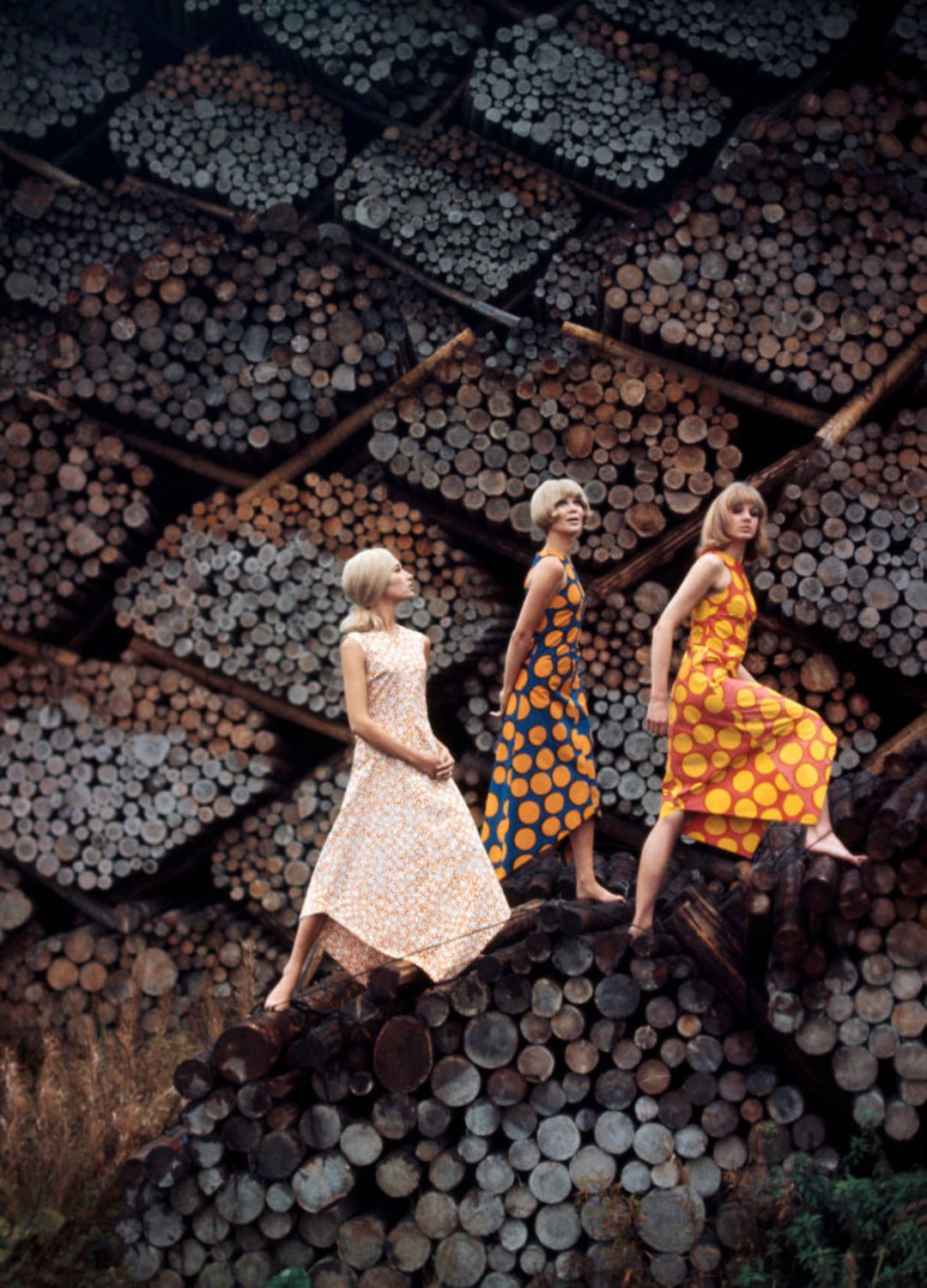
Finnish textiles, clothing, and home furnishings company, Marimekko Corporation launched in 1951 but its distinctive aesthetic, featuring abstract patterns and vibrant patterns really catapulted into the mainstream in the 60s.
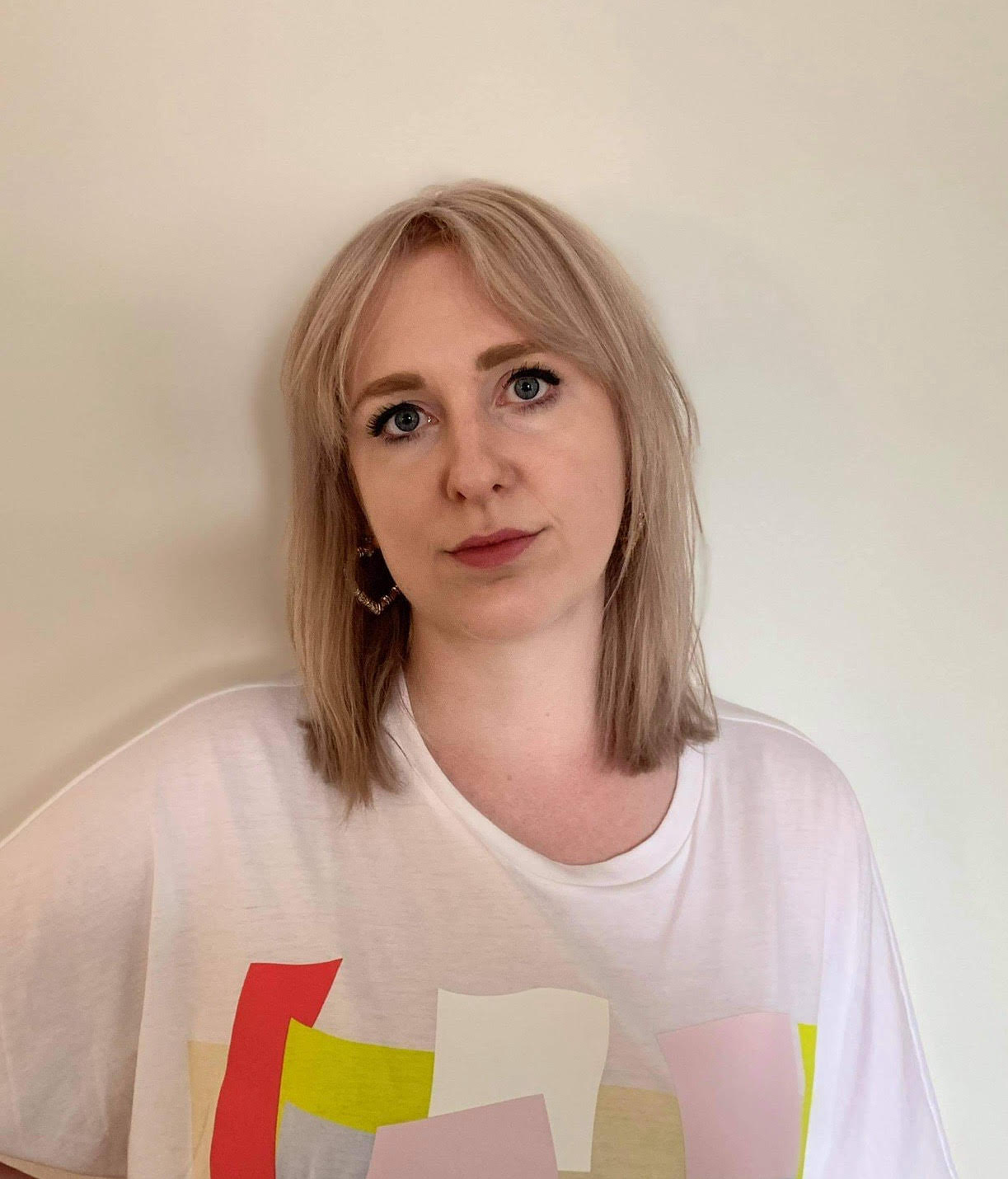
Anna is an editor and journalist with over a decade of experience in digital content production, ranging from working in busy newsrooms and advertising agencies to fashion houses and luxury drinks brands. Now a freelance writer and editor, Anna covers everything lifestyle, from fashion and skincare to mental health and the best cocktails (and where to drink them).
Originally from Glasgow, Anna has lived in Berlin, Barcelona, and London, with stints in Guernsey and Athens. Her love of travel influences her work, whether she’s stocking up on the best skincare at French pharmacies, taking notes on local street style, or learning to cook regional cuisines. A certified cinephile, when she's not travelling the world, you'll find her hiding away from it at her local cinema.
-
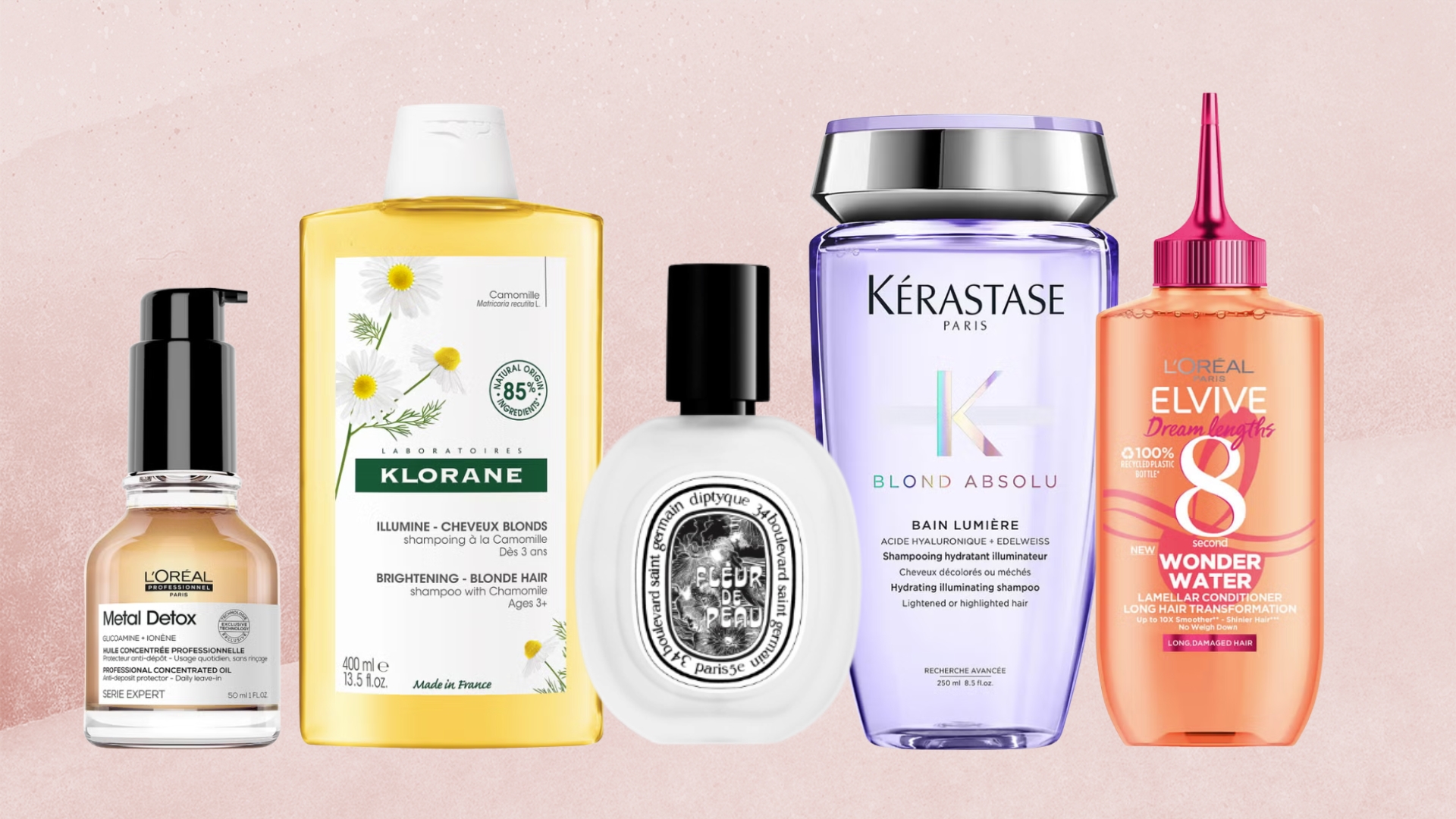 French haircare is our beauty team's (not so) secret to chic and hydrated strands - these are the 5 formulas to invest in
French haircare is our beauty team's (not so) secret to chic and hydrated strands - these are the 5 formulas to invest inWe'd love to do as the French women do and keep mum on our go-to haircare buys, but they're simply too good not to share...
By Naomi Jamieson Published
-
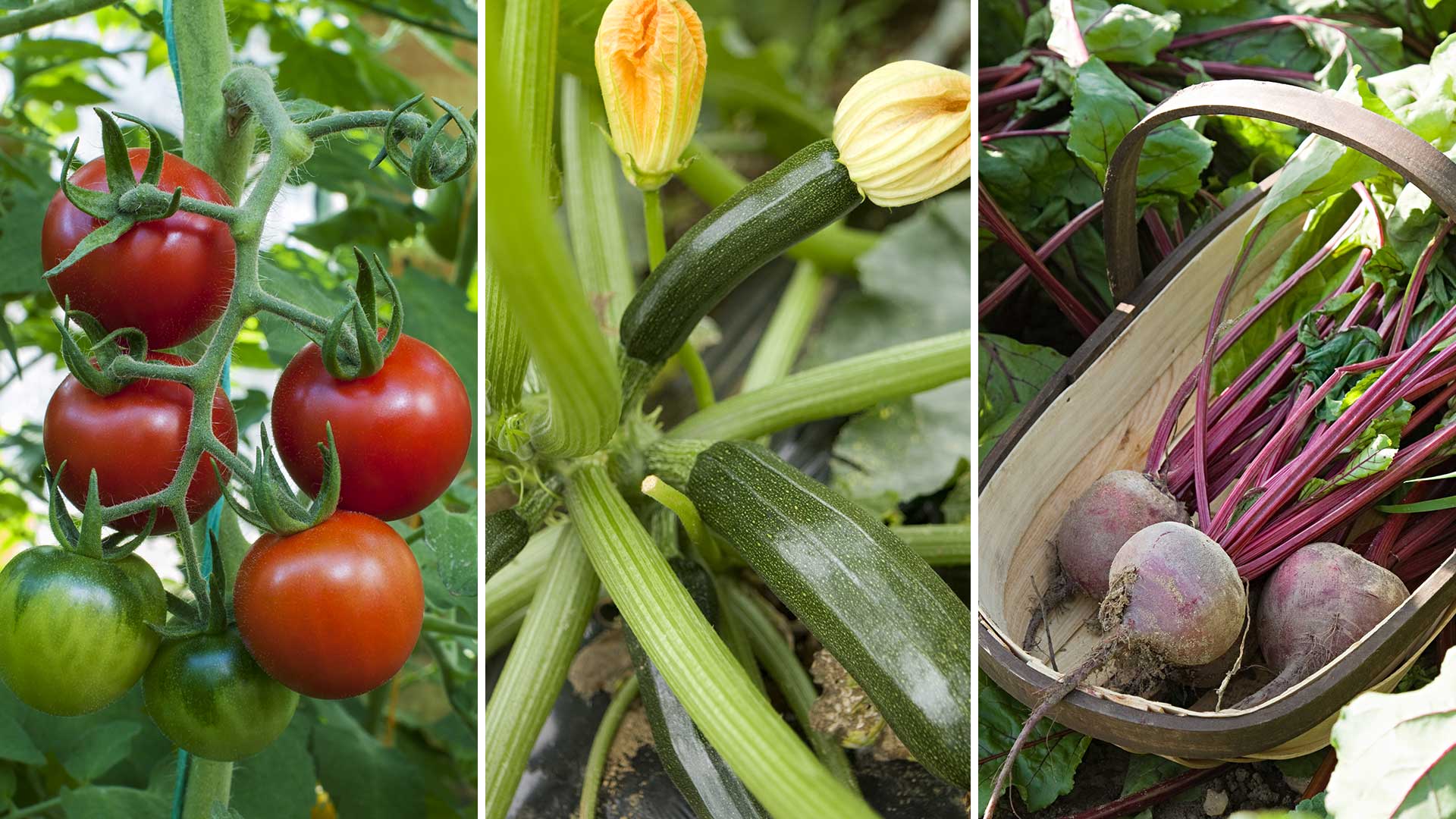 Vegetables to plant in April: 8 crops to start now for a delicious harvest later in the year
Vegetables to plant in April: 8 crops to start now for a delicious harvest later in the yearDiscover which vegetables to plant in April, and top tips for growing success
By Holly Crossley Published
